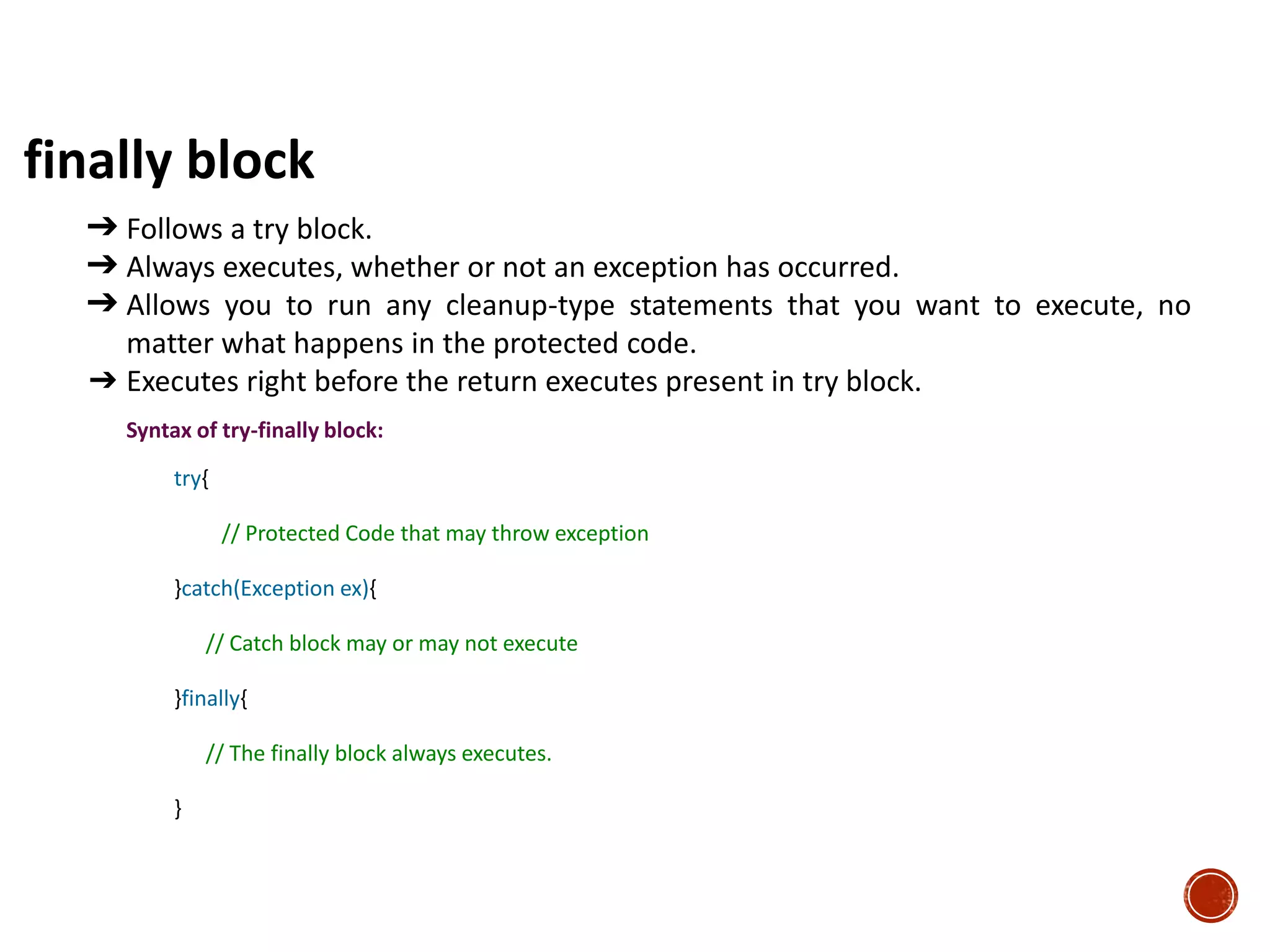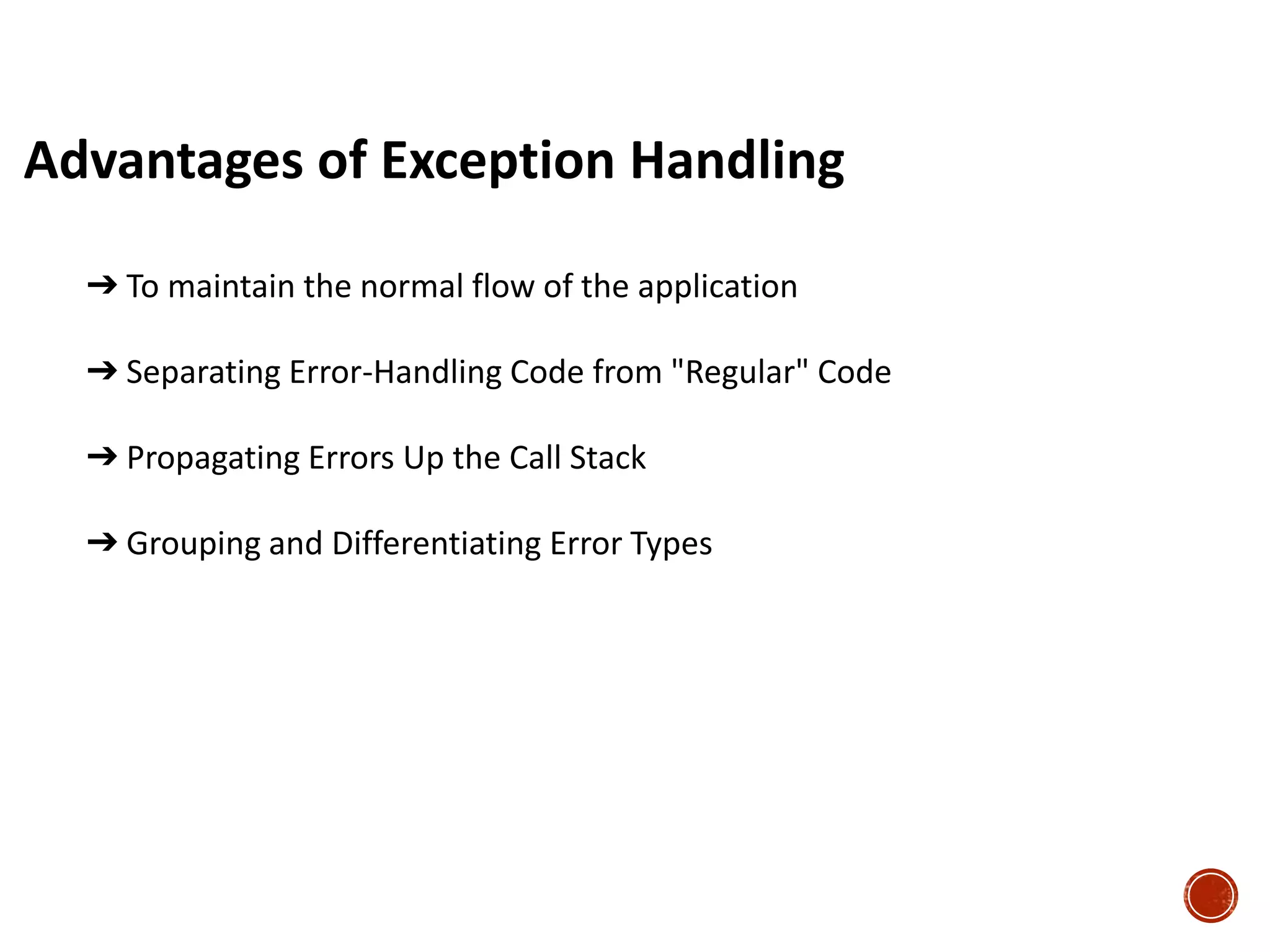This chapter discusses decision making, object-oriented fundamentals, inner classes, and exception handling in Java. It describes the use of if and switch statements for decision making. It also covers access specifiers, encapsulation, inheritance, polymorphism, abstract classes, interfaces, inner classes, and exceptions.
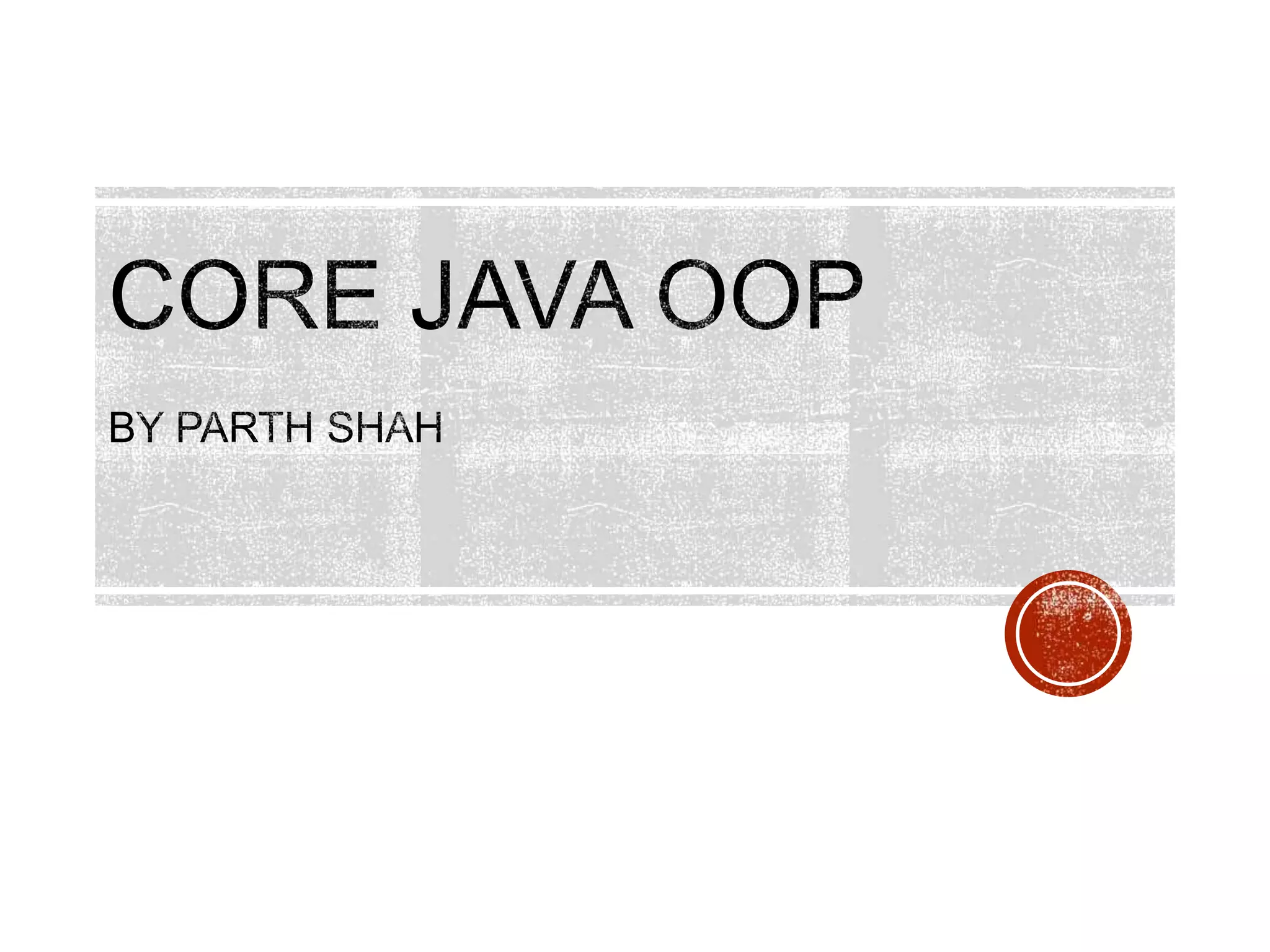
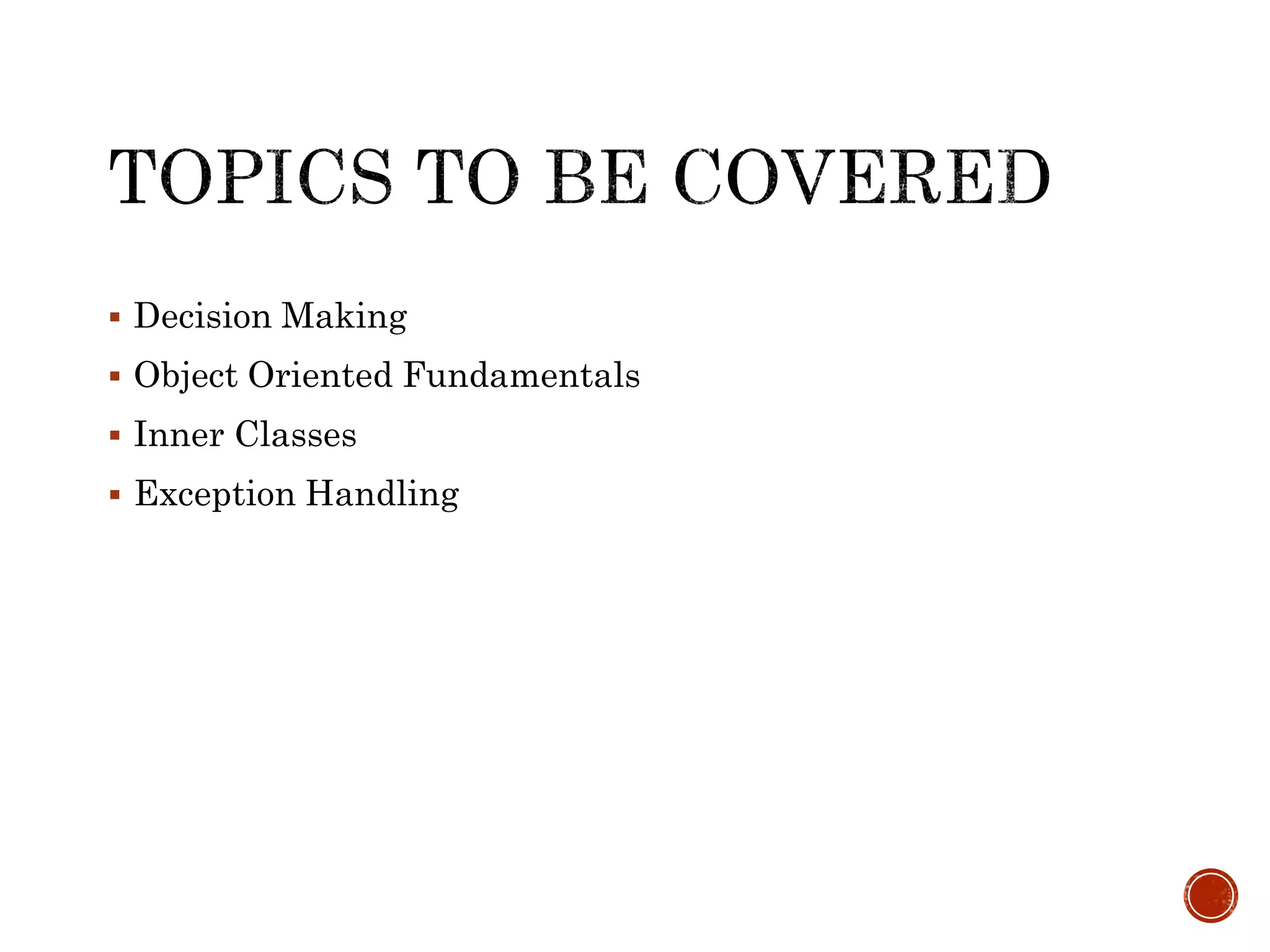

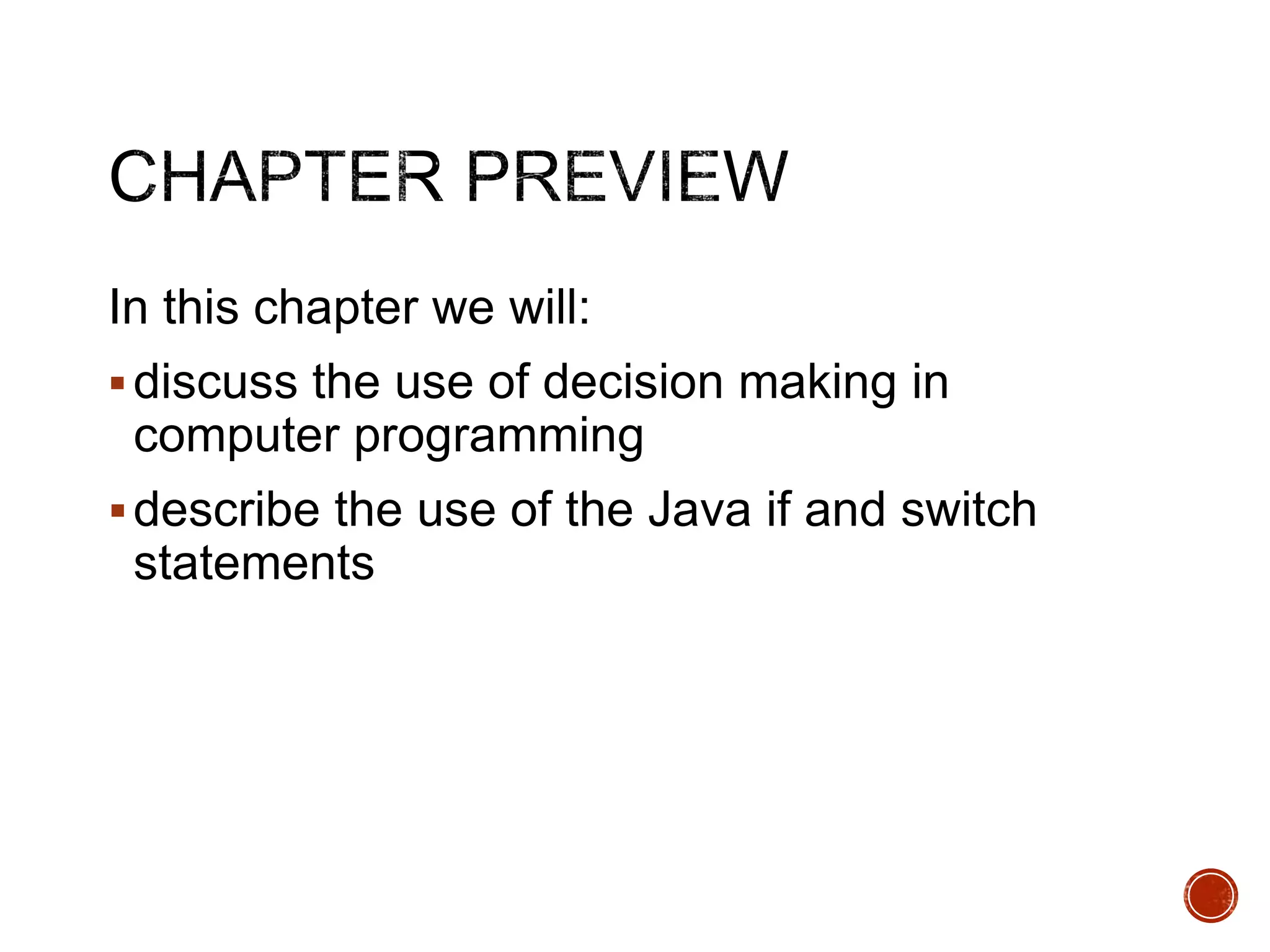
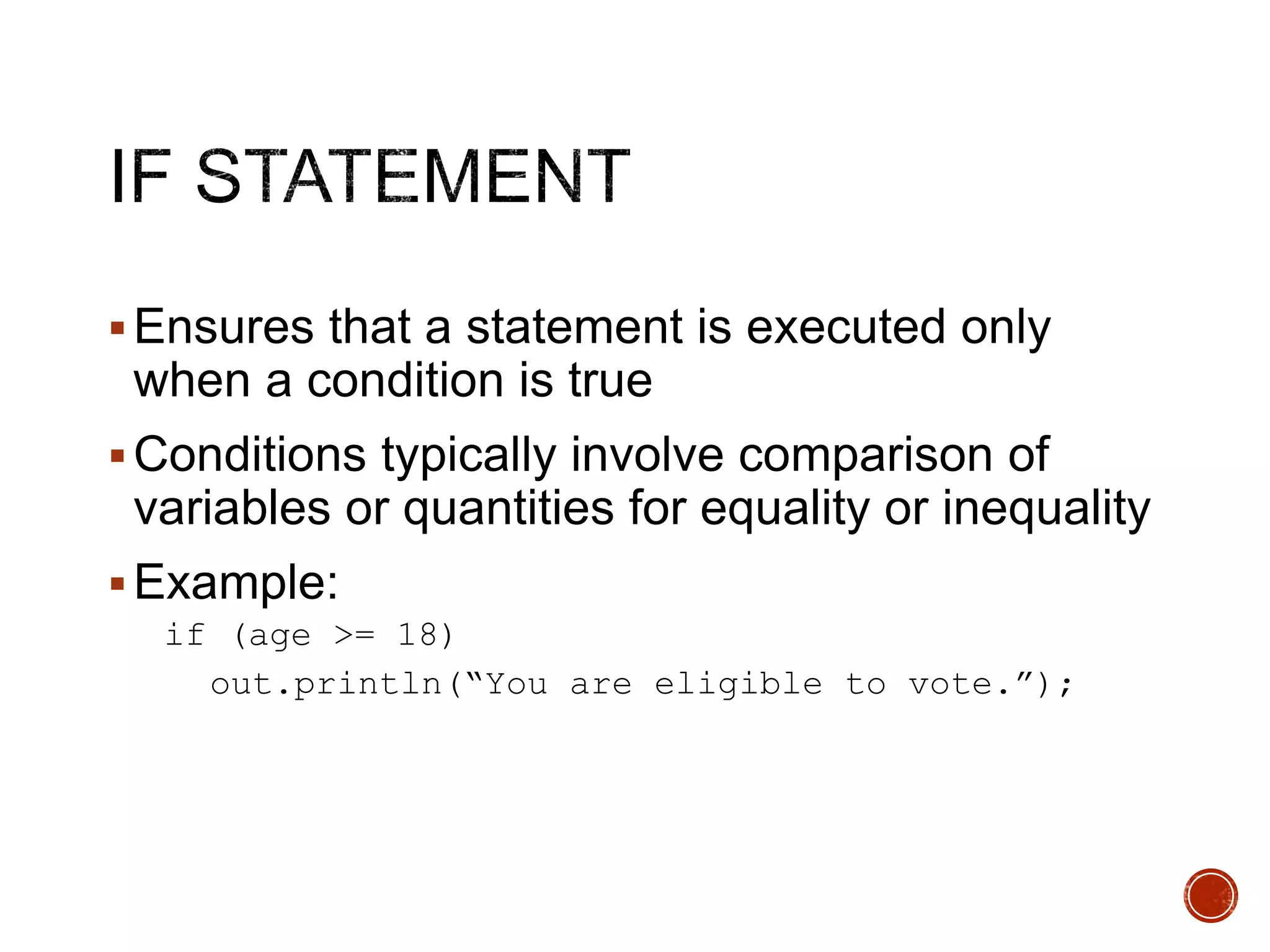
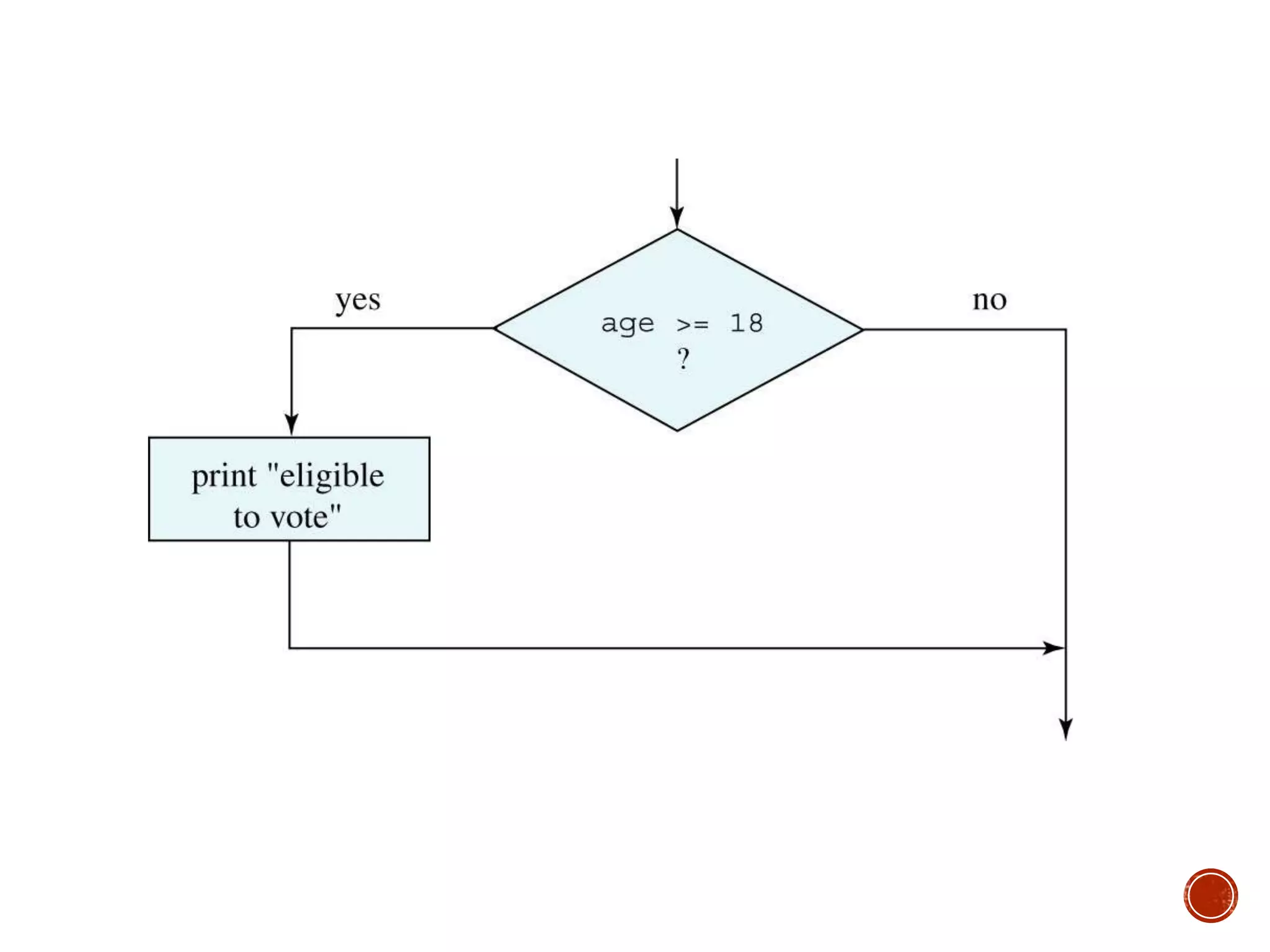
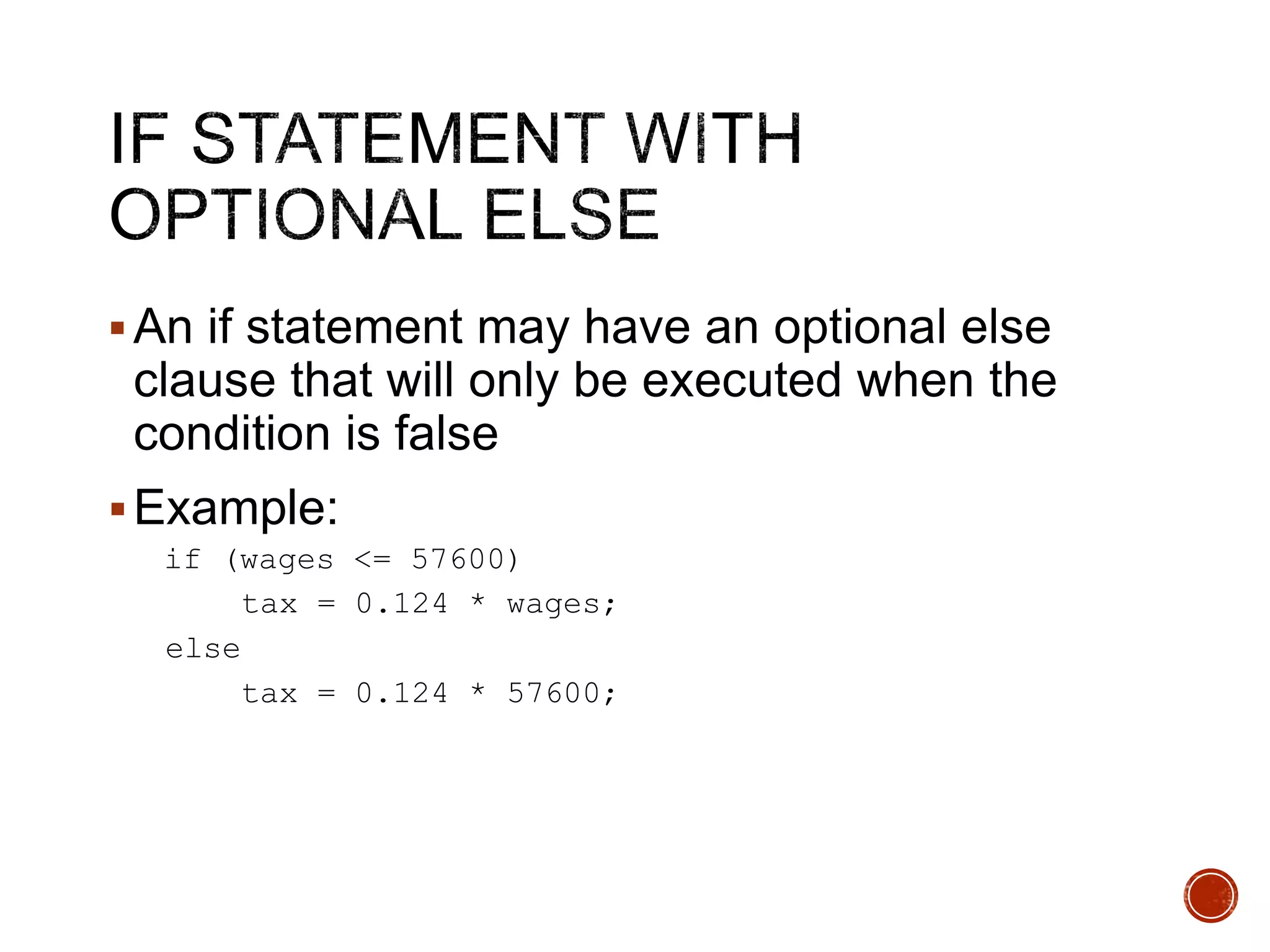
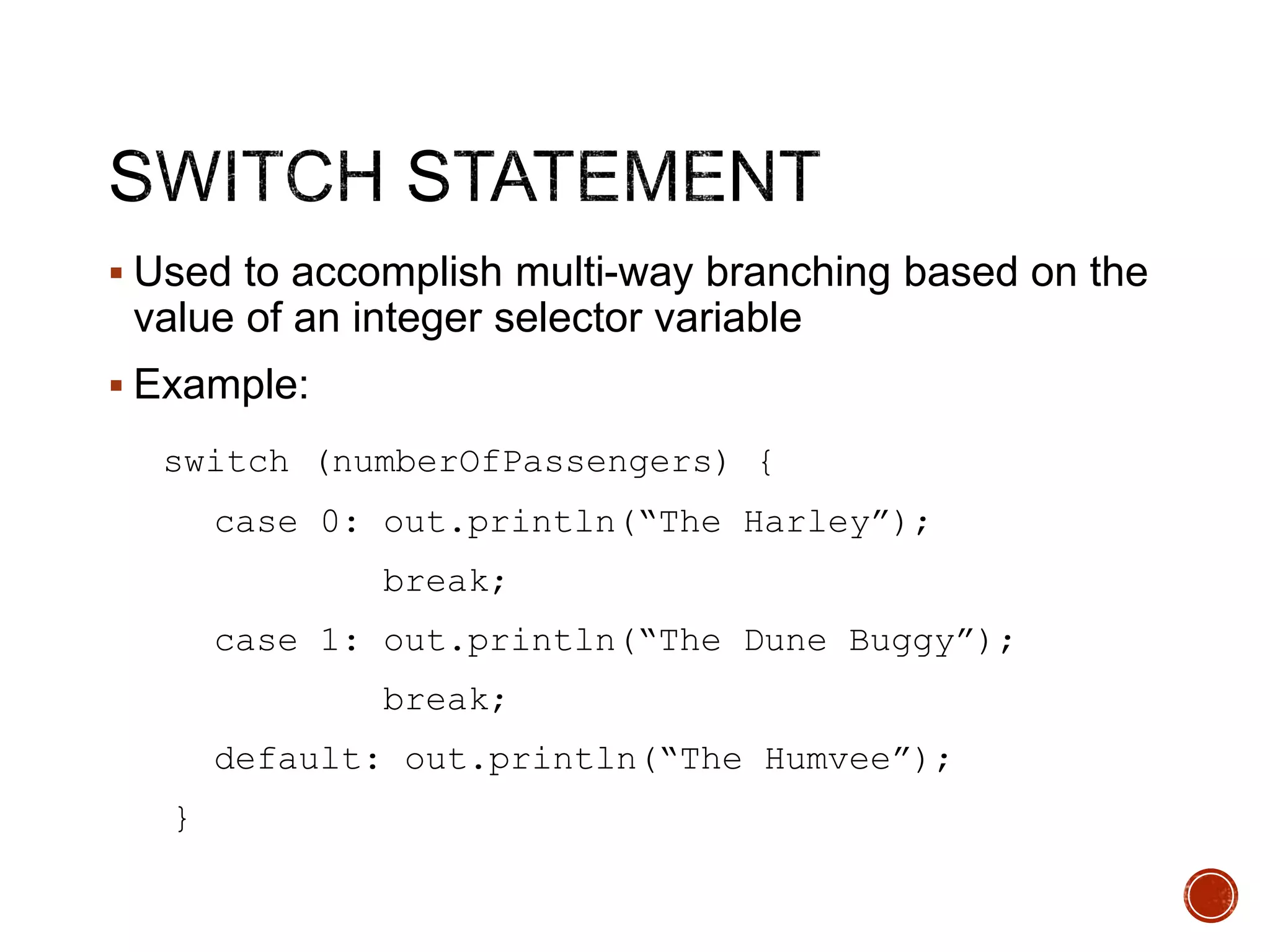
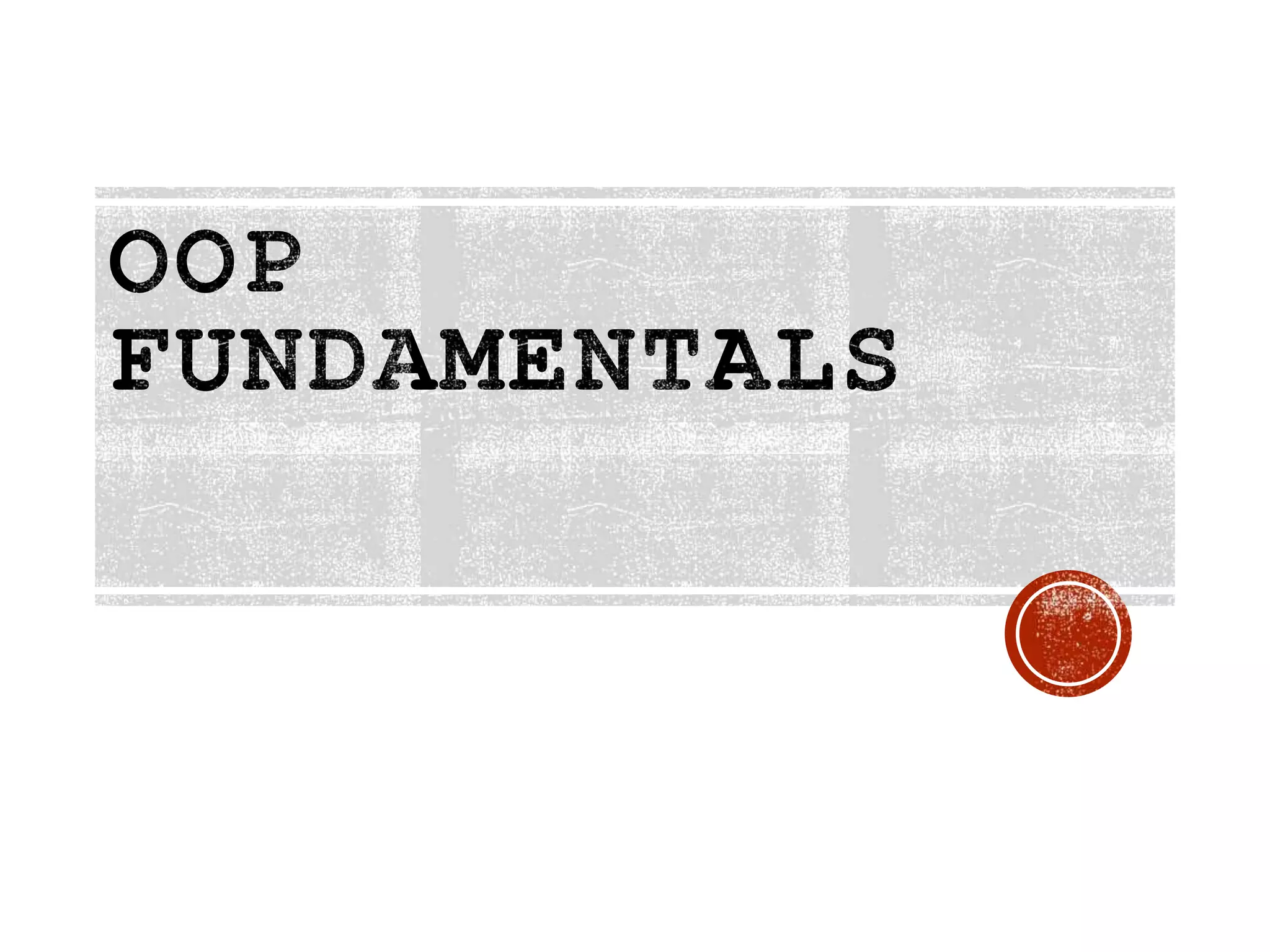
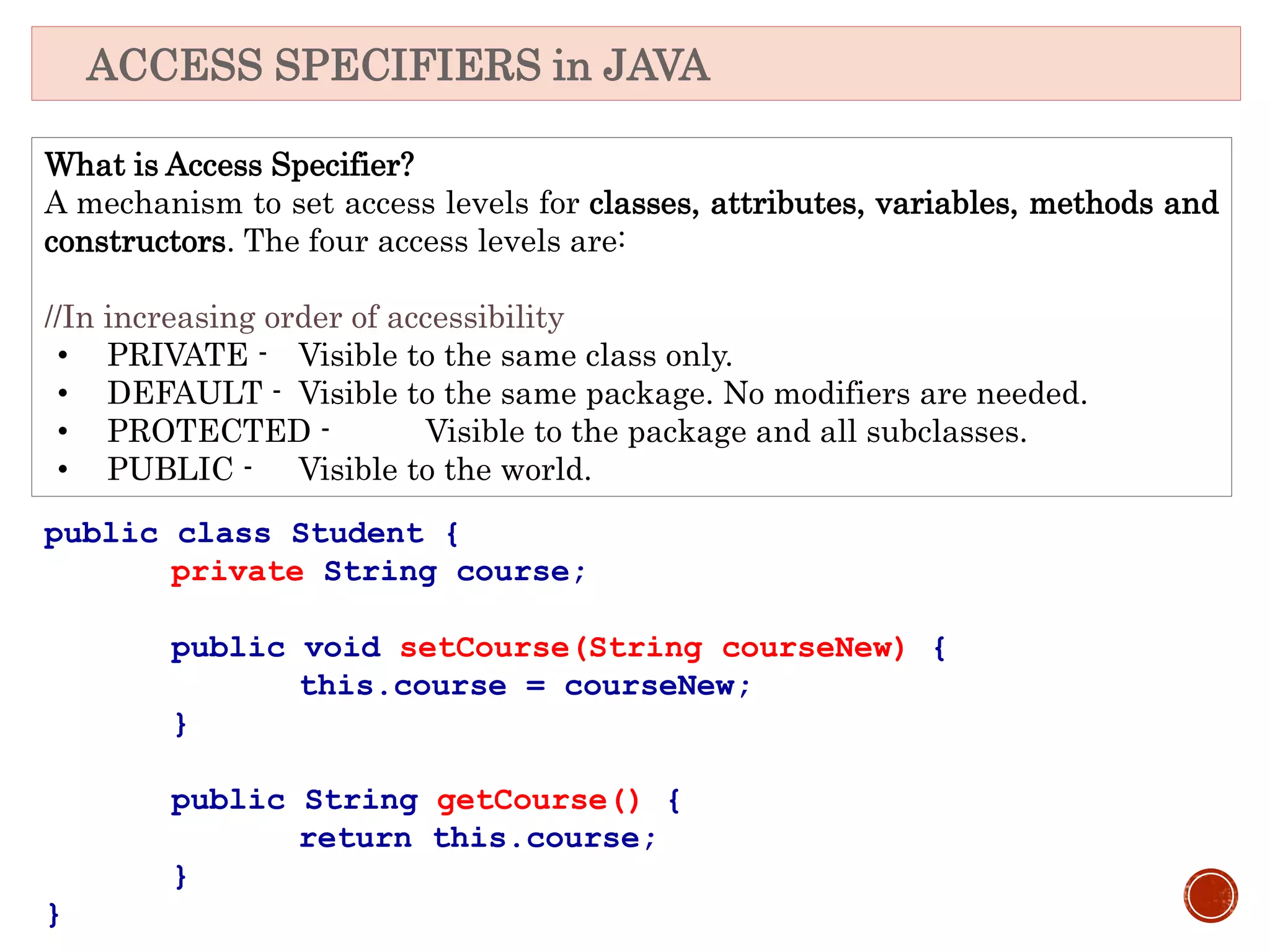
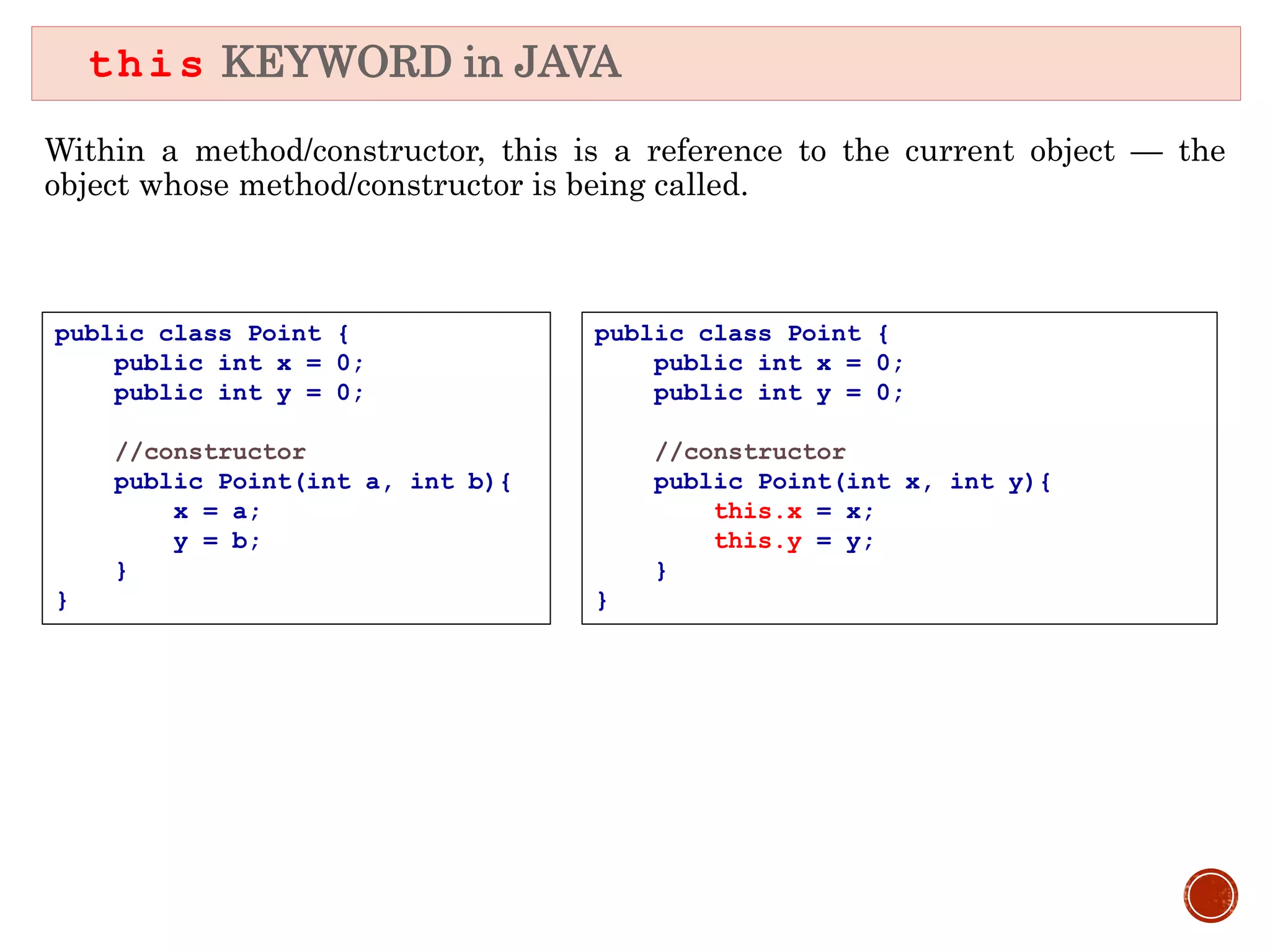
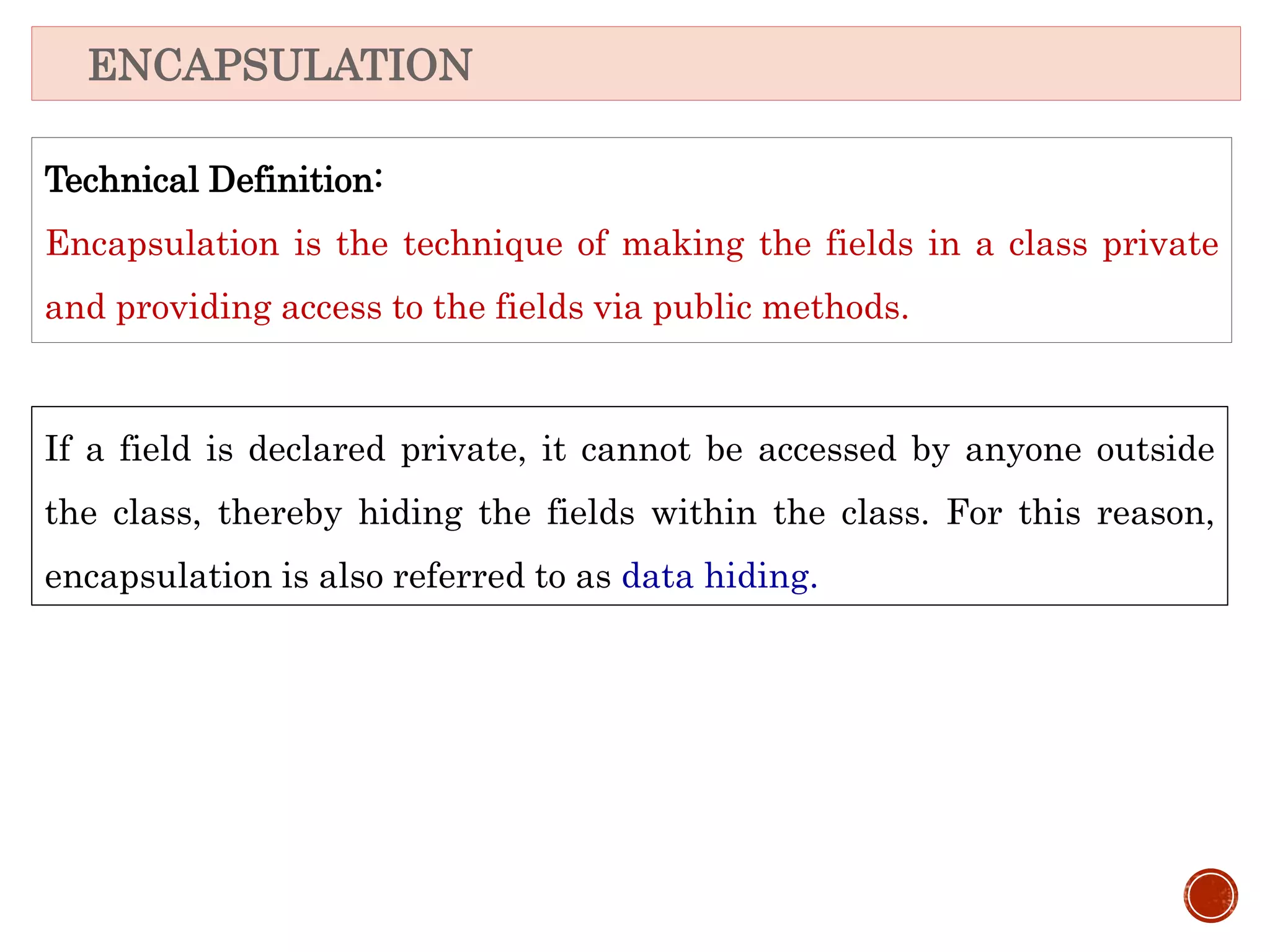
![ENCAPSULATION - EXAMPLE 1. class Student{ 2. private String name; 3. public String getName(){ 4. return name; 5. } 6. public void setName(String newName){ 7. name = newName; 8. } 9. } 10.class Execute{ 11. public static void main(String args[]){ 12. String localName; 13. Student s1 = new Student(); 14. localName = s1.getName(); 15. } 16.} At line no14, we can not write localName = s1.name; The public methods are the access points to a class's private fields(attributes) from the outside class.](https://image.slidesharecdn.com/corejavaoop-170210200049/75/Core-java-oop-13-2048.jpg)
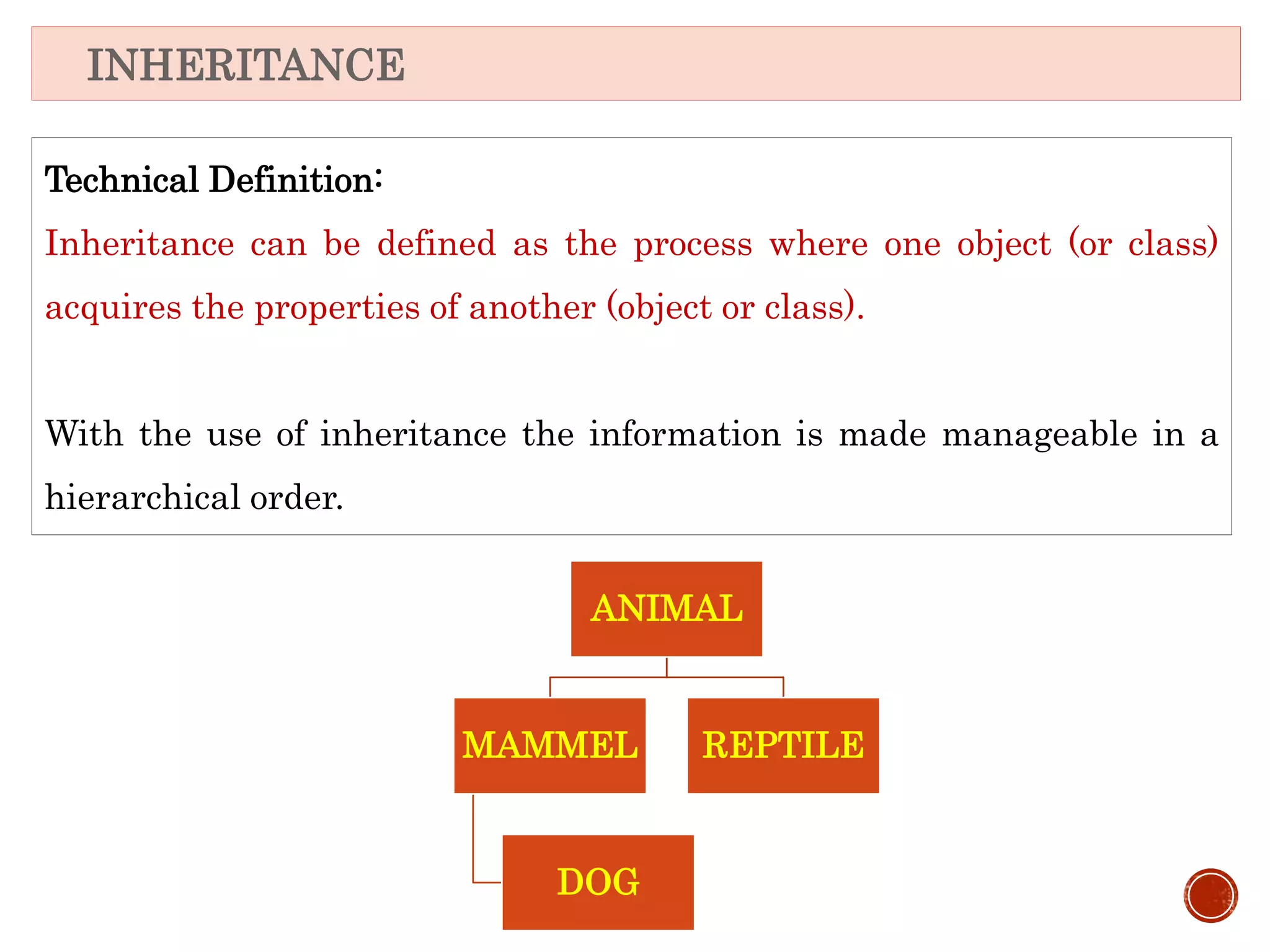
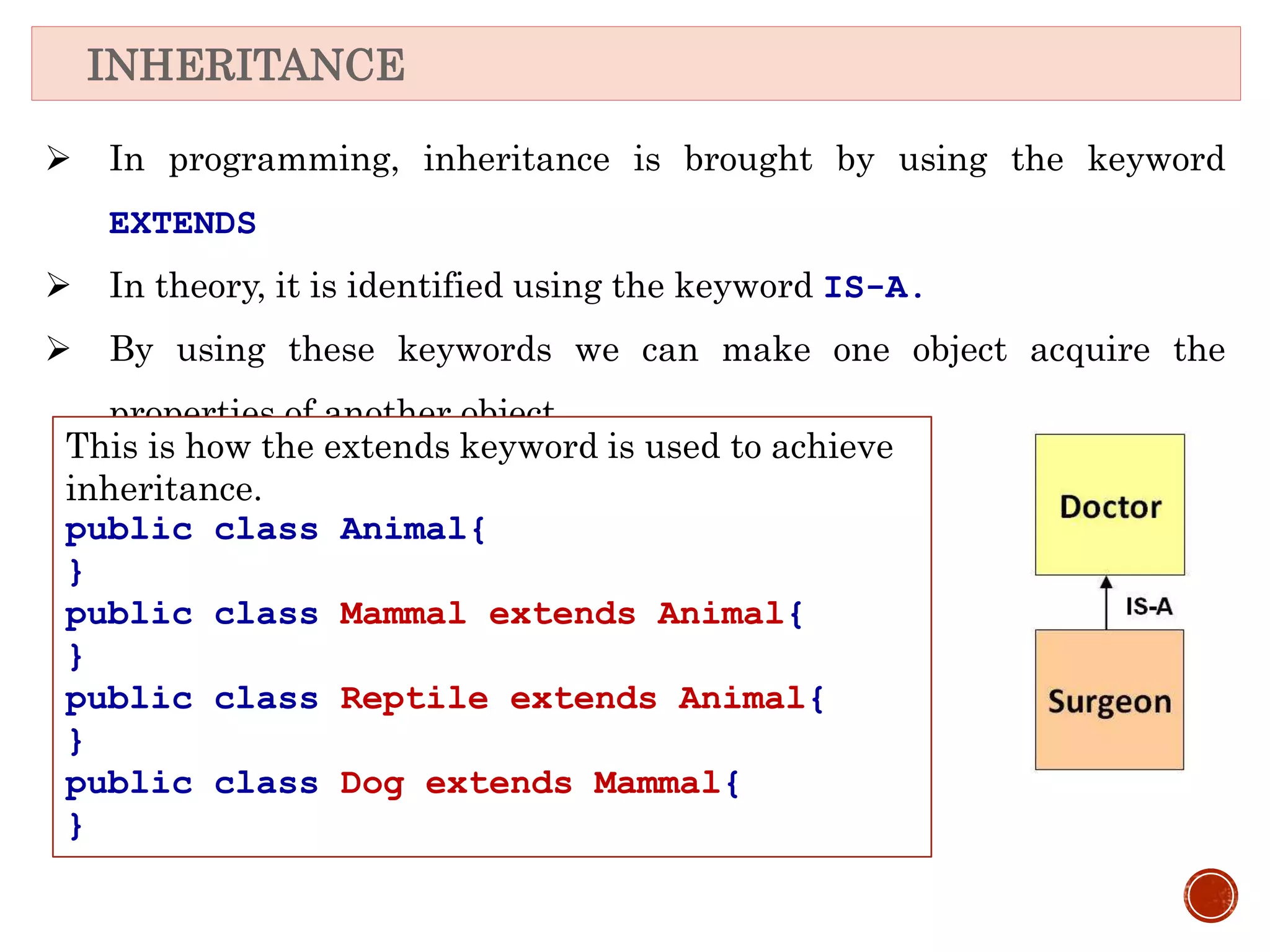
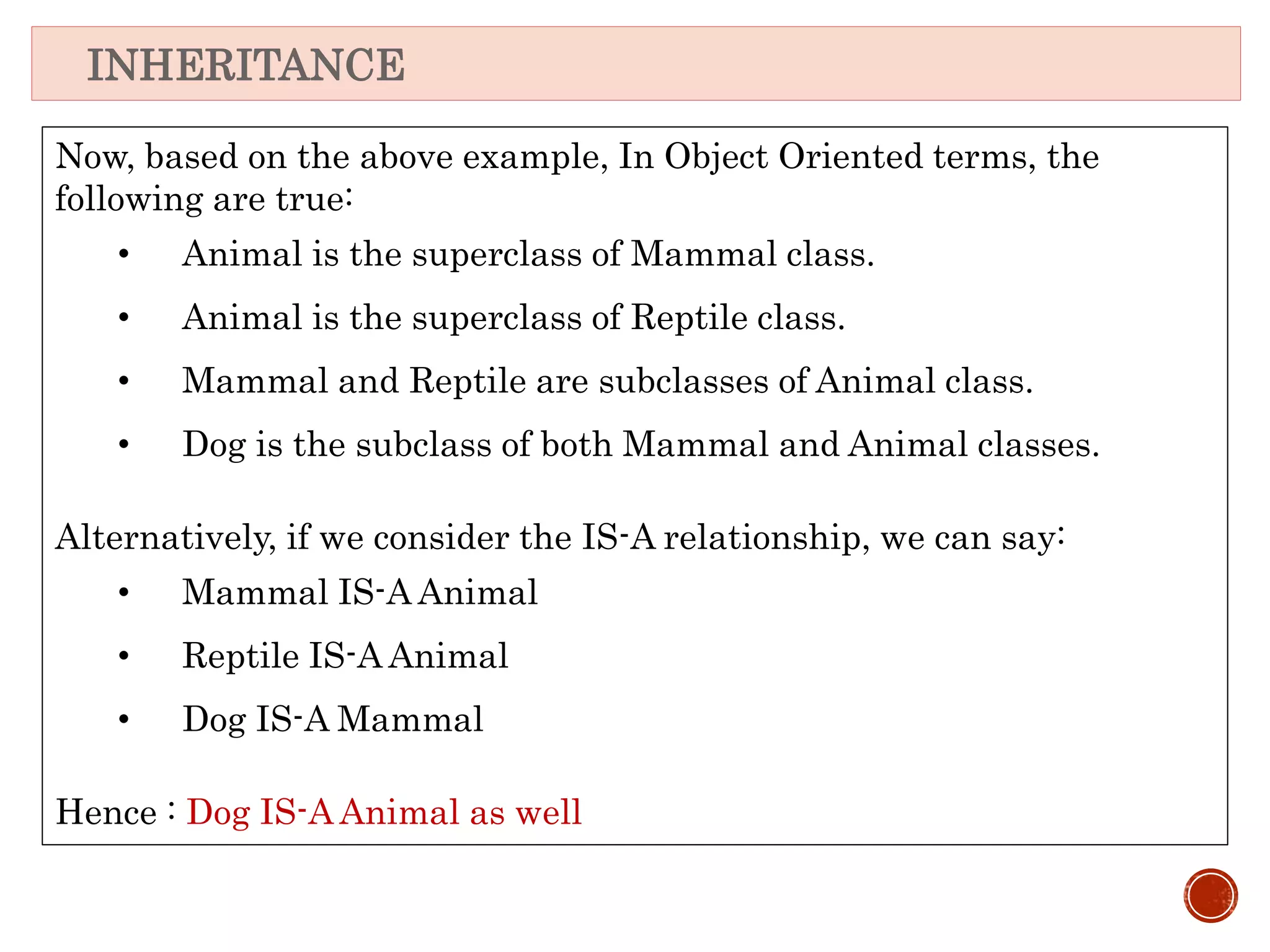
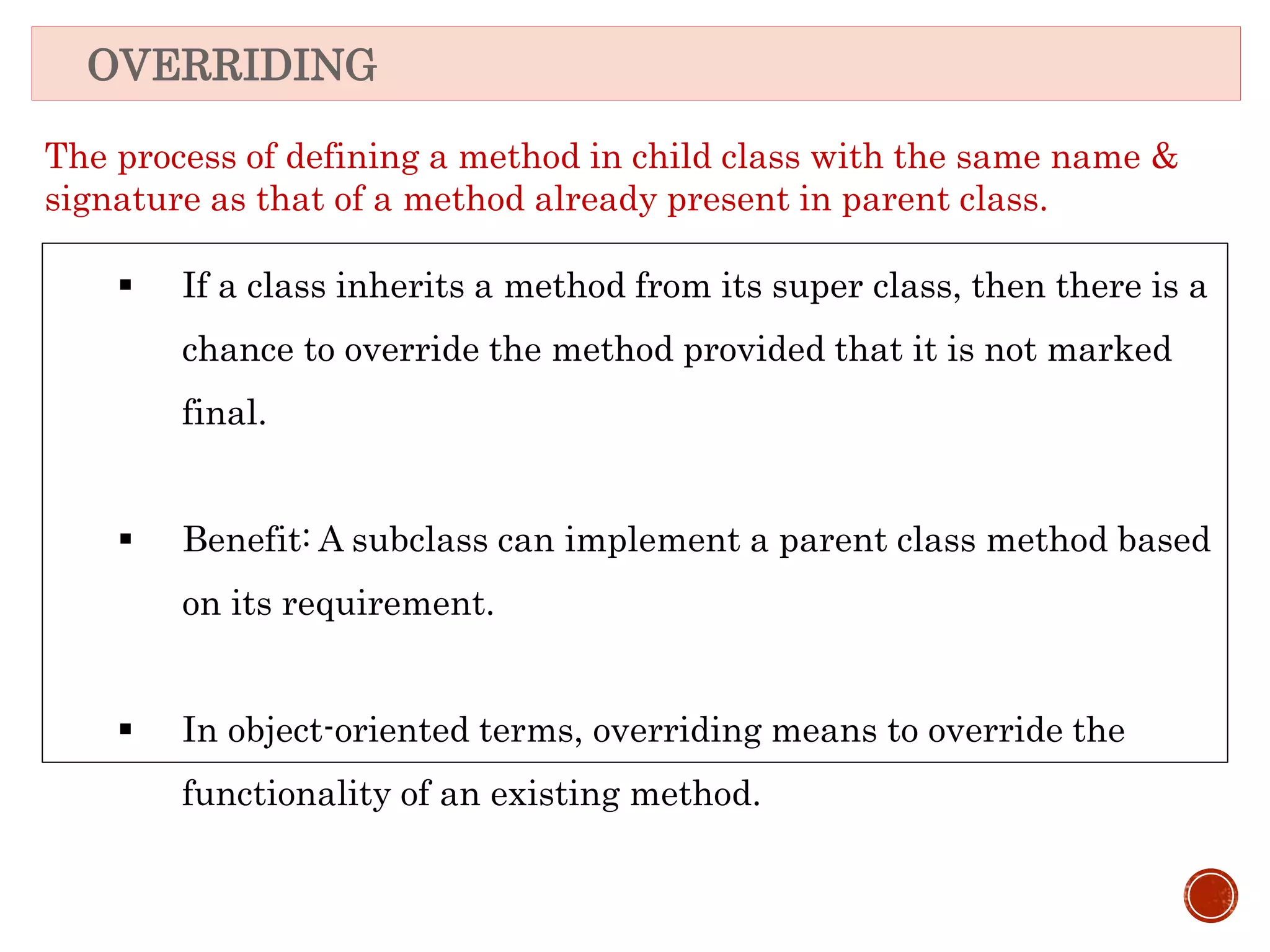
![OVERRIDING: USING THE SUPER KEYWORD class Animal{ public void move(){ System.out.println("Animals can move"); } } class Dog extends Animal{ public void move(){ super.move(); // invokes the super class method System.out.println("Dogs can walk and run"); } } class TestDog{ public static void main(String args[]){ Animal b = new Dog(); // Animal reference but Dog object b.move(); //Runs the method in Dog class } } When invoking a superclass version of an overridden method the super keyword is used. This would produce the following result: Animals can move Dogs can walk and run](https://image.slidesharecdn.com/corejavaoop-170210200049/75/Core-java-oop-18-2048.jpg)
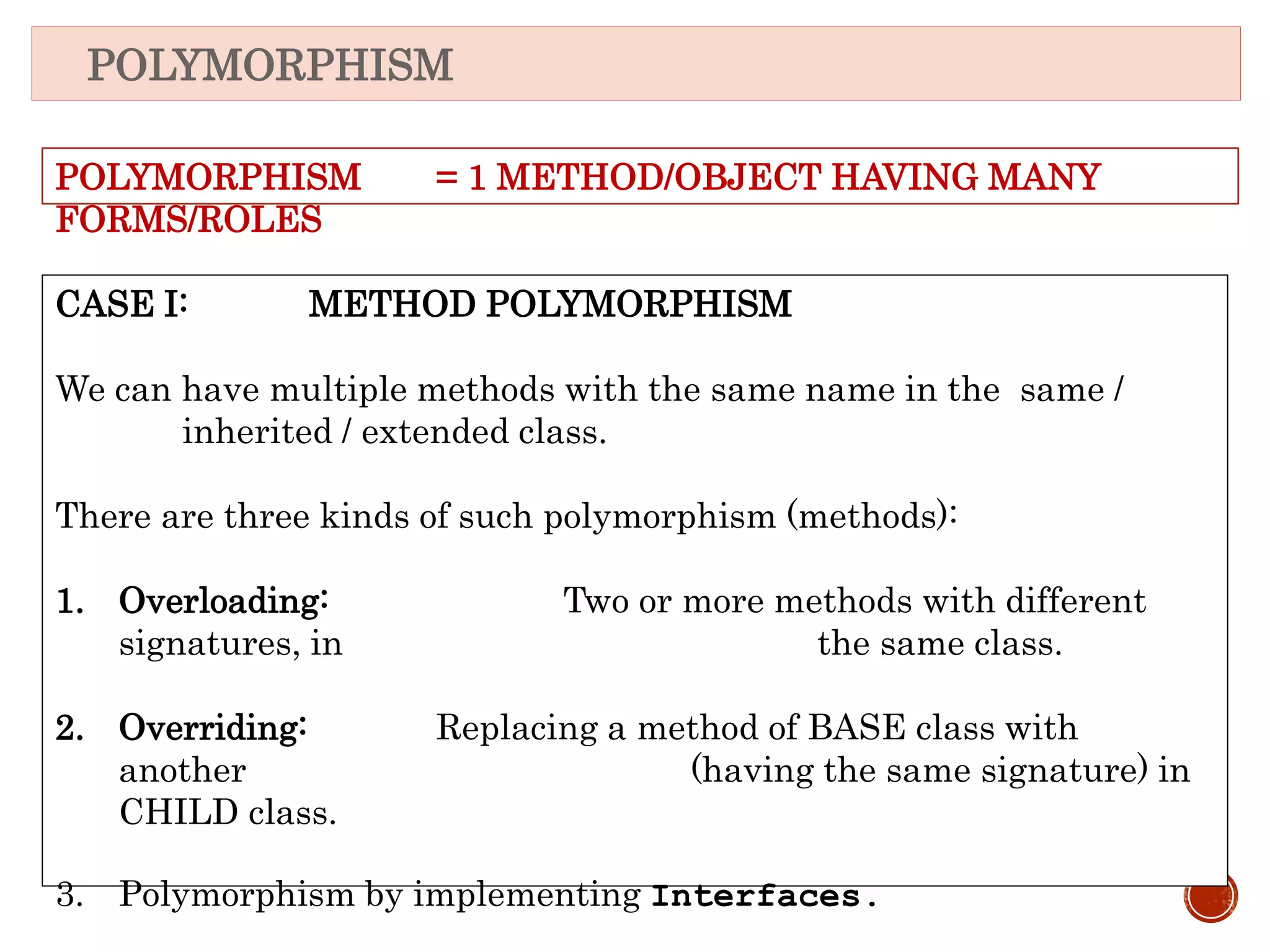
![POLYMORPHISM – METHOD OVERLOADING class Test { public static void main(String args[]) { myPrint(5); myPrint(5.0); } static void myPrint(int i) { System.out.println("int i = " + i); } static void myPrint(double d) { System.out.println("double d = " + d); } } OUTPUT: int i = 5 double d = 5.0 Please note that the signature of overloaded method is different.](https://image.slidesharecdn.com/corejavaoop-170210200049/75/Core-java-oop-20-2048.jpg)
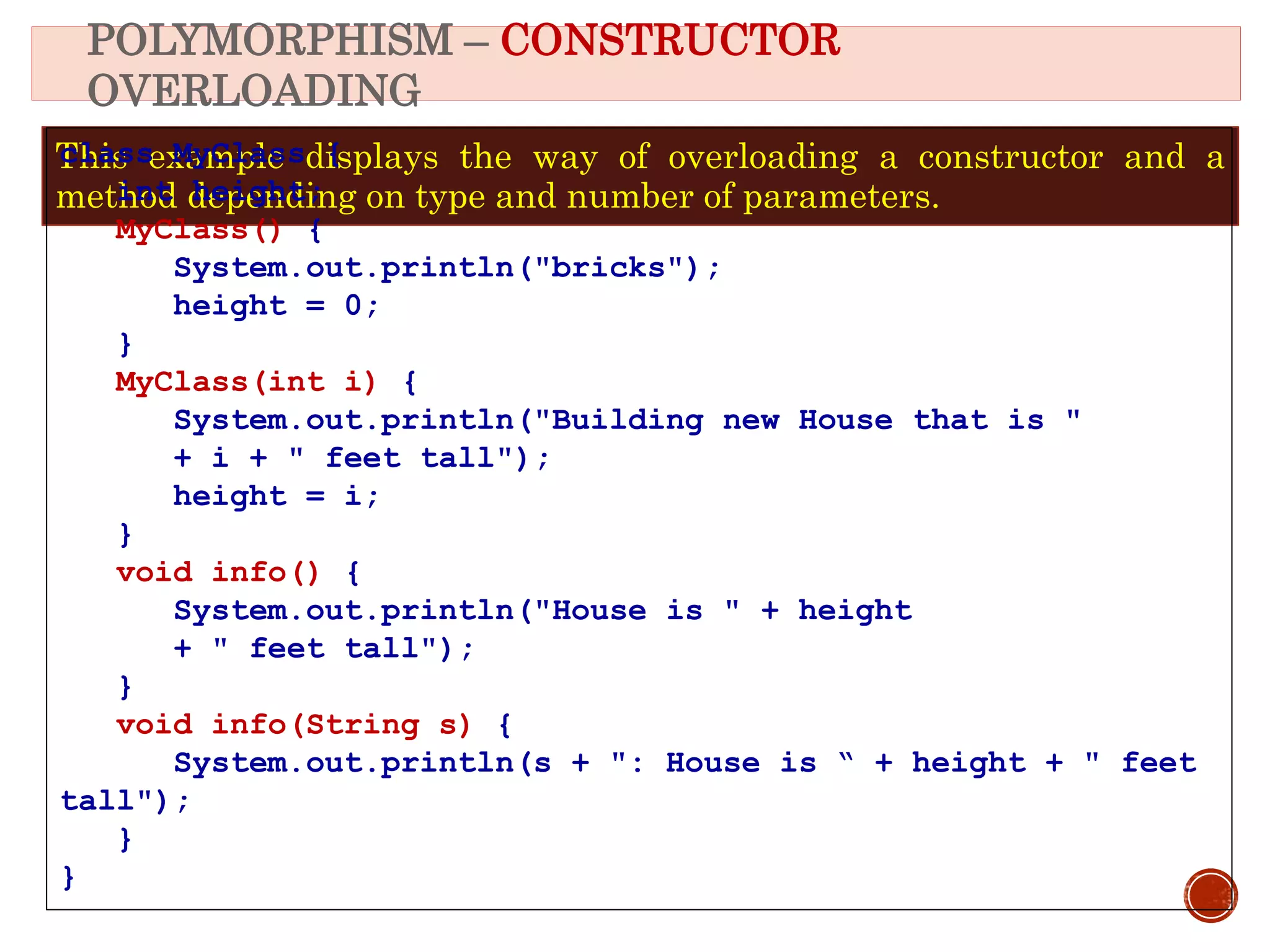
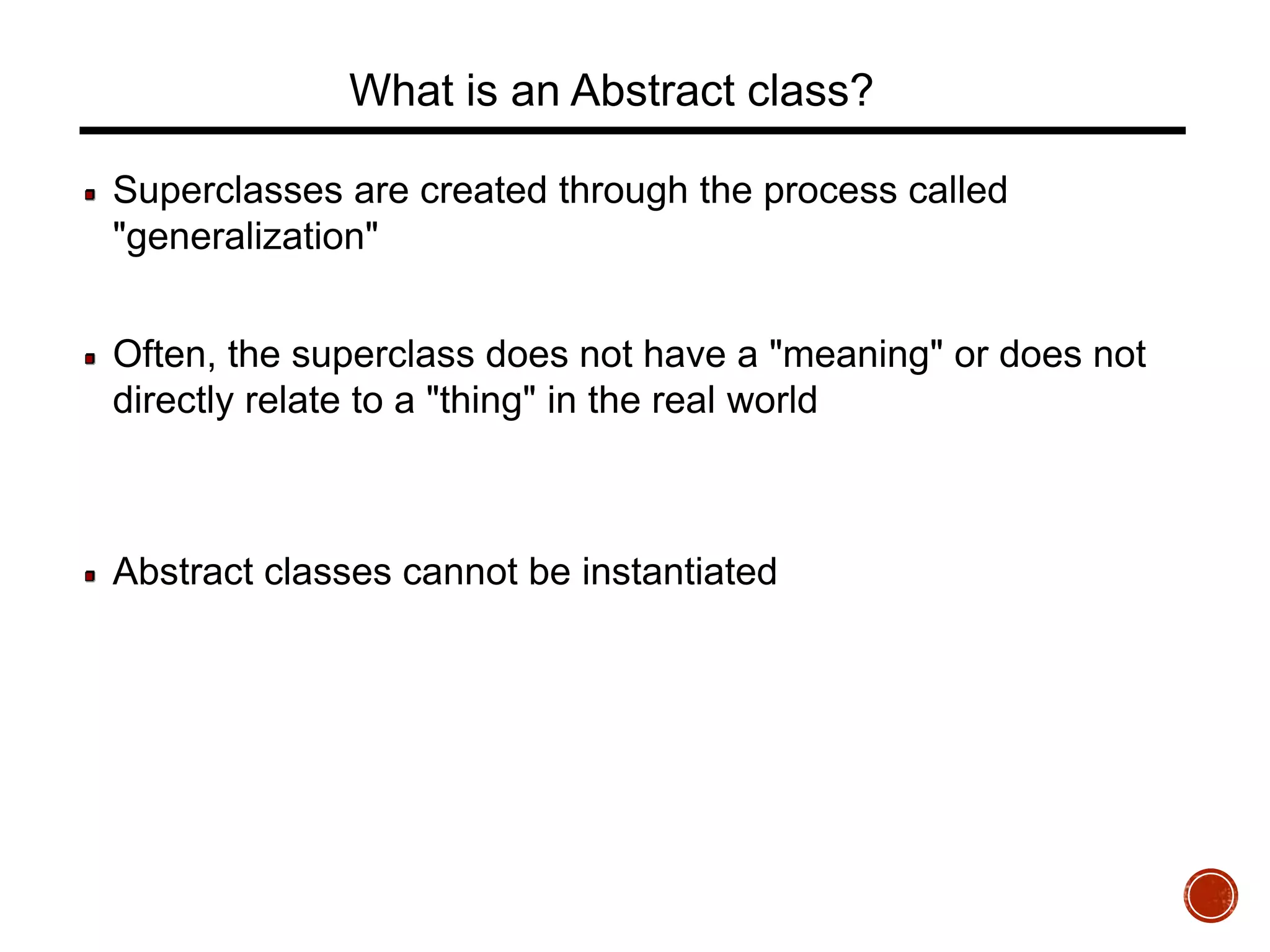
![Defining Abstract Methods Inheritance is declared using the "extends" keyword If inheritance is not defined, the class extends a class called Object public abstract class Transaction { public abstract int computeValue(); public class RetailSale extends Transaction { public int computeValue() { [...] Transaction - computeValue(): int RetailSale - computeValue(): int StockTrade - computeValue(): int public class StockTrade extends Transaction { public int computeValue() { [...] Note: no implementation](https://image.slidesharecdn.com/corejavaoop-170210200049/75/Core-java-oop-23-2048.jpg)
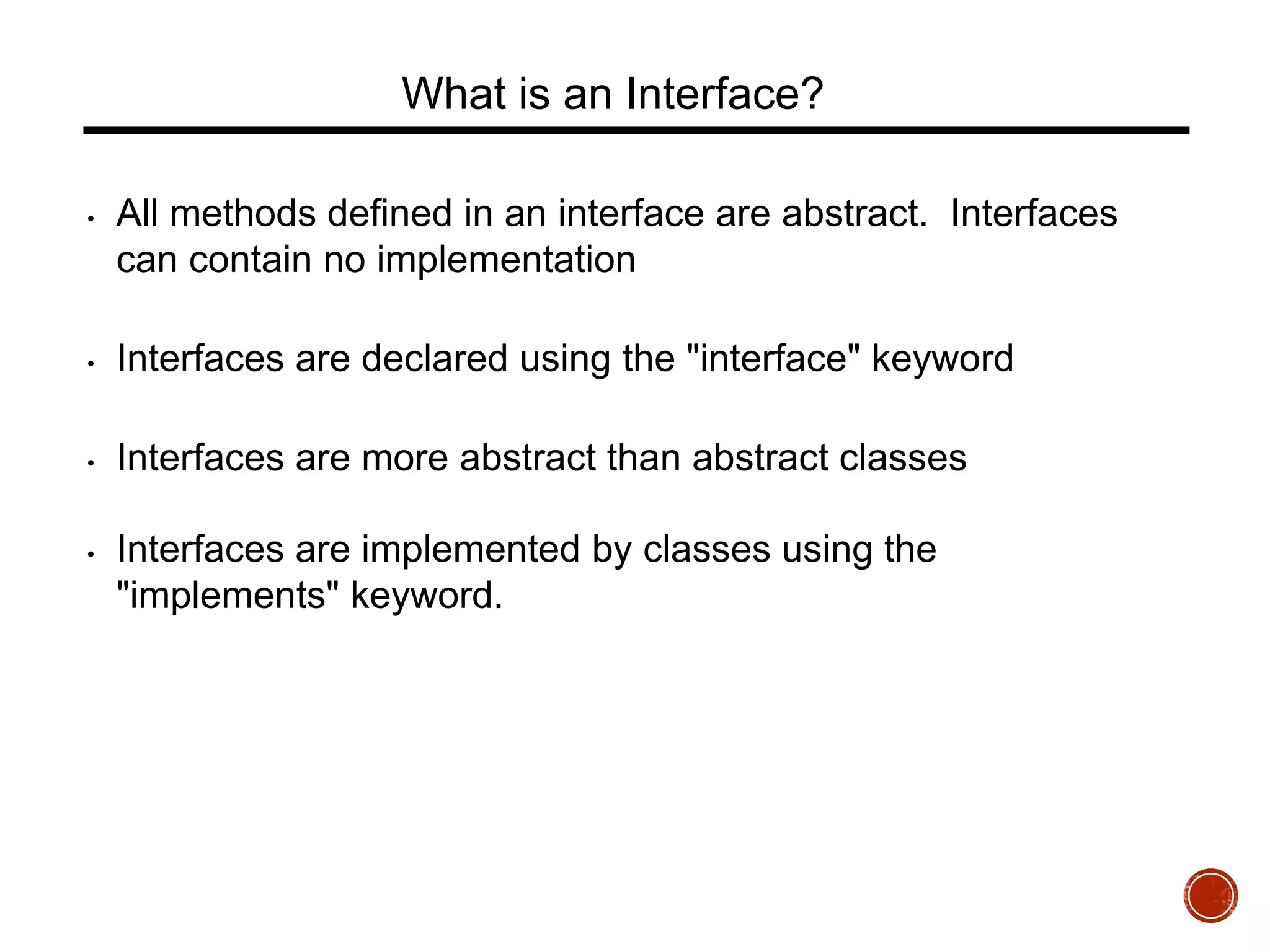
![Declaring an Interface public interface Steerable { public void turnLeft(int degrees); public void turnRight(int degrees); } In Steerable.java: public class Car extends Vehicle implements Steerable { public int turnLeft(int degrees) { [...] } public int turnRight(int degrees) { [...] } In Car.java: When a class "implements" an interface, the compiler ensures that it provides an implementation for all methods defined within the interface.](https://image.slidesharecdn.com/corejavaoop-170210200049/75/Core-java-oop-25-2048.jpg)

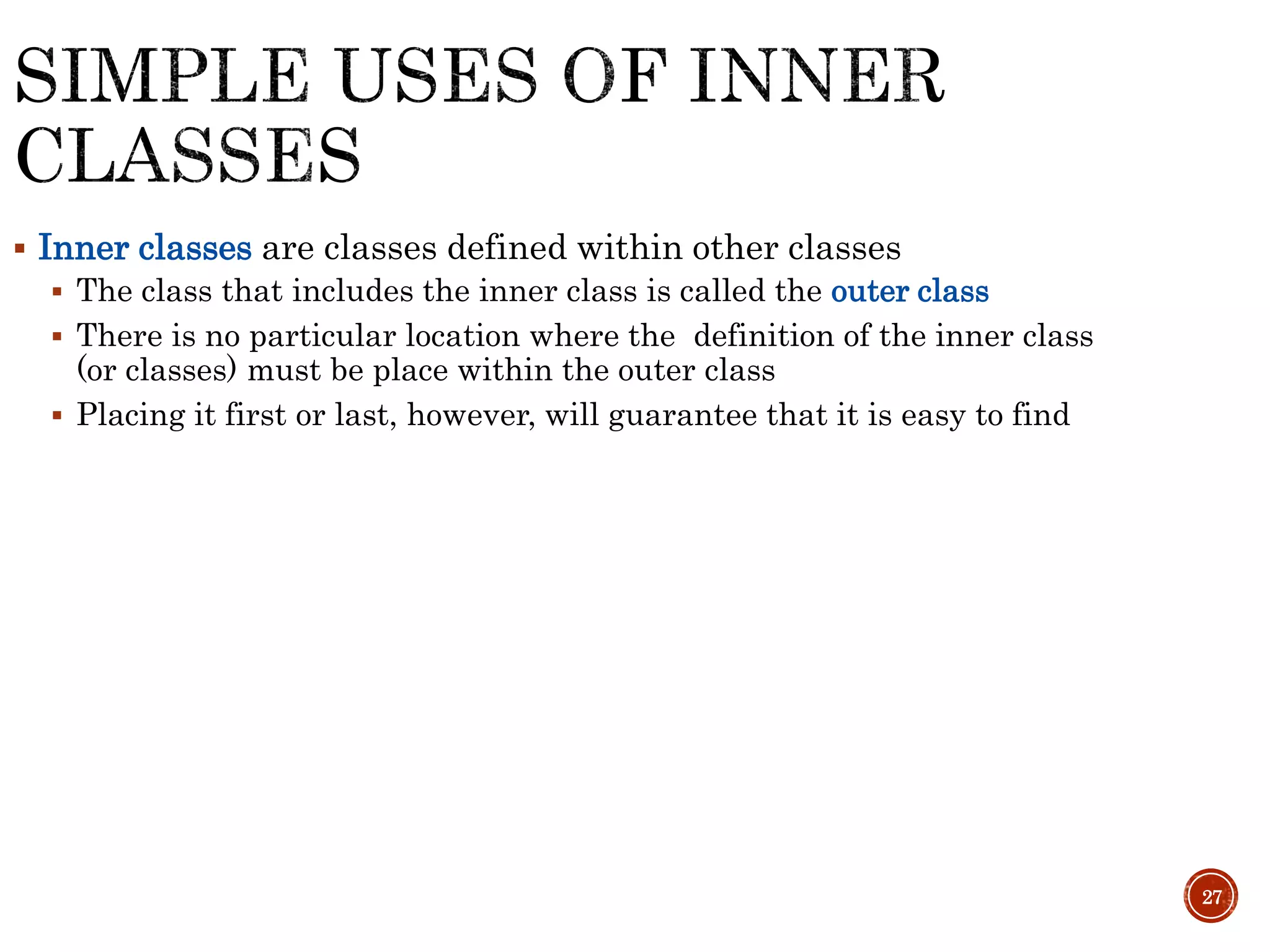
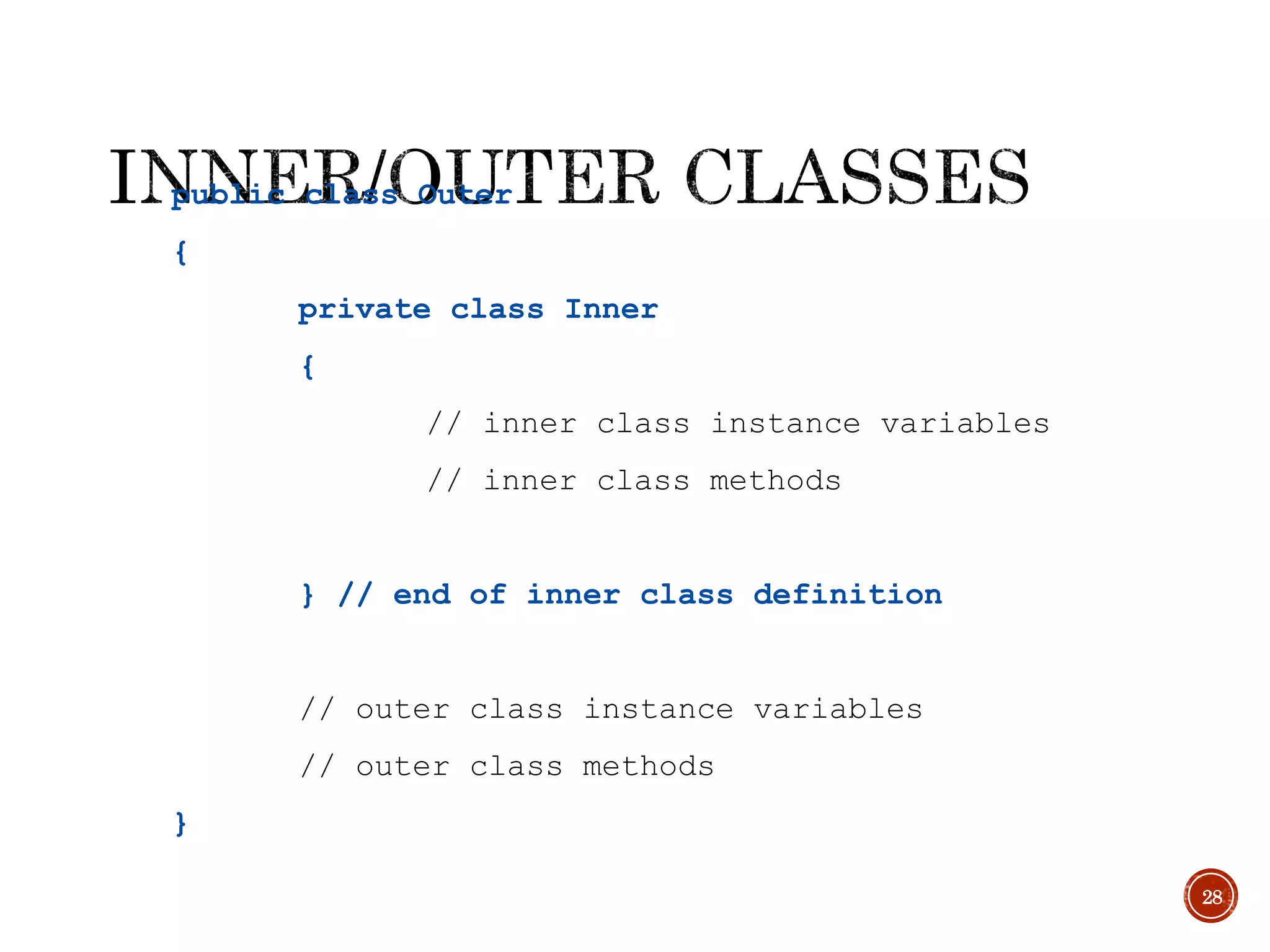
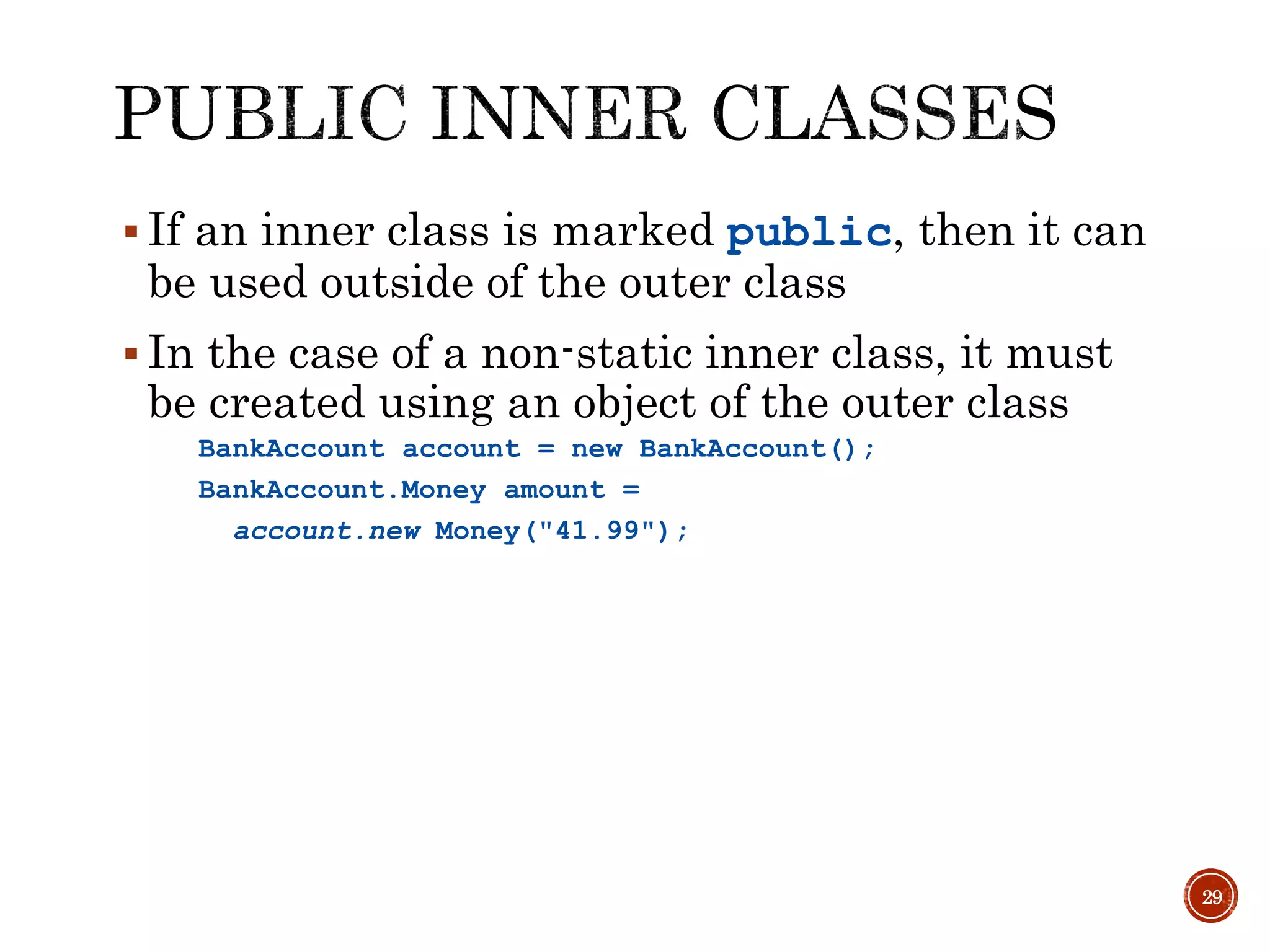
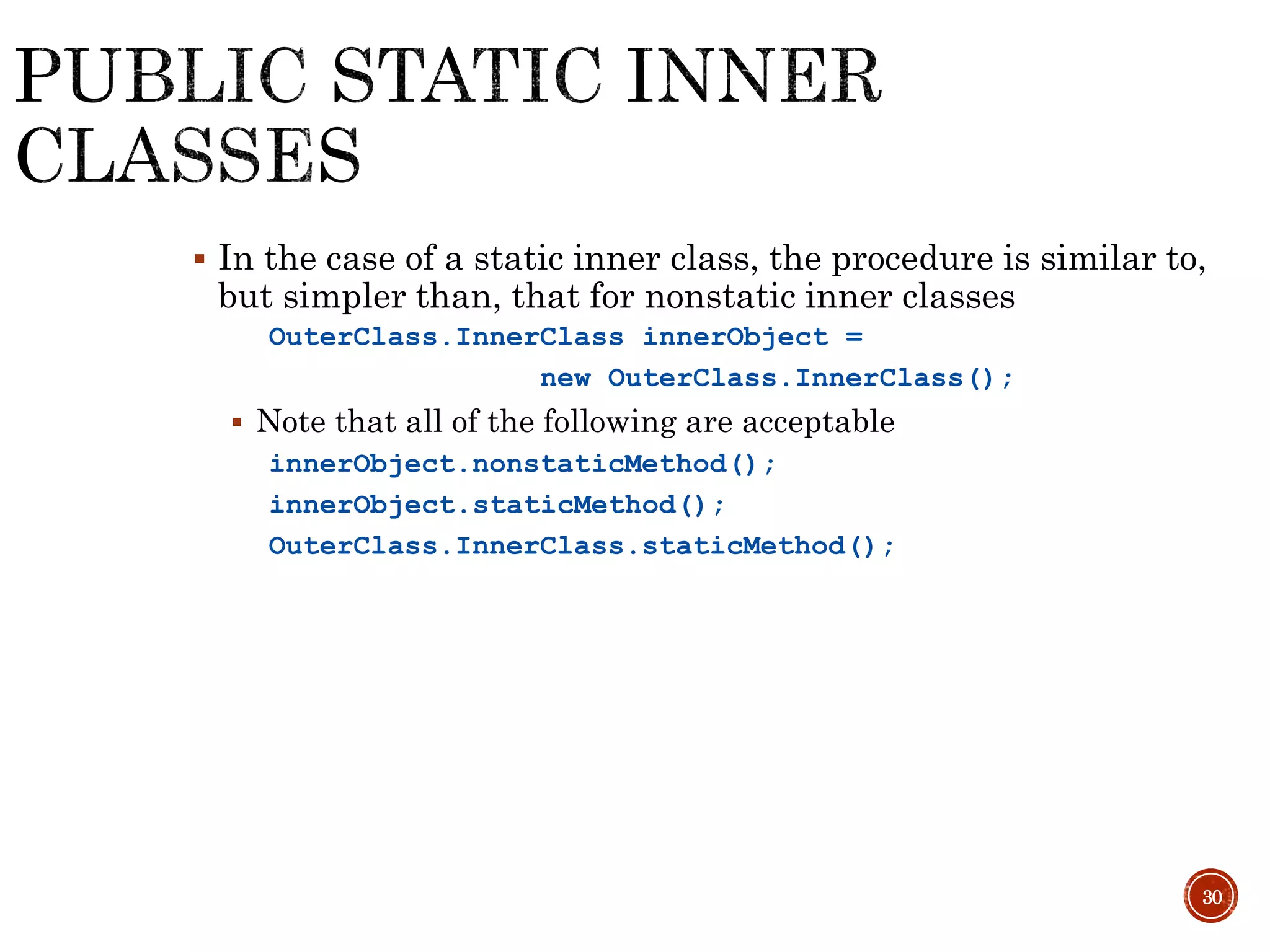
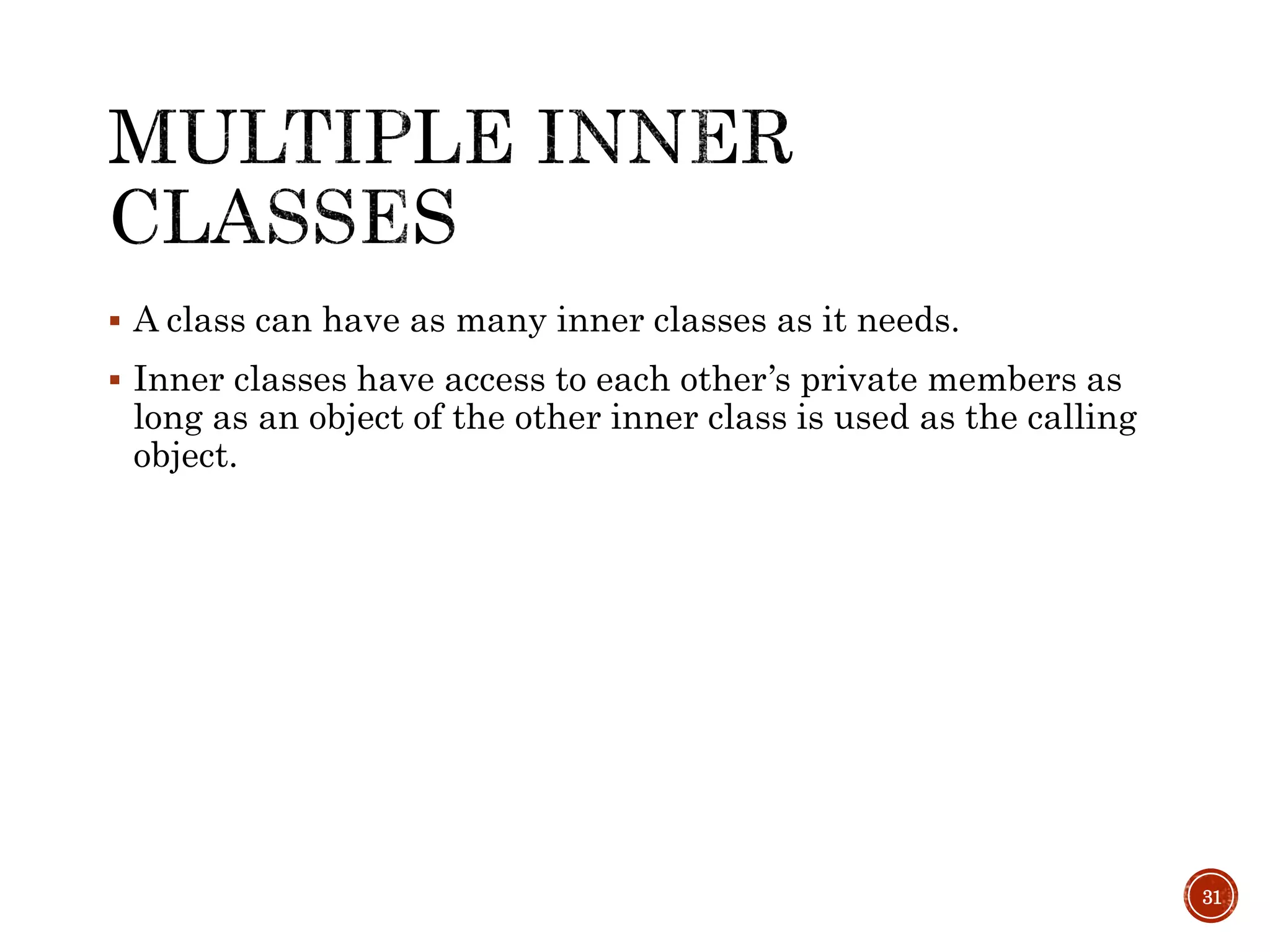
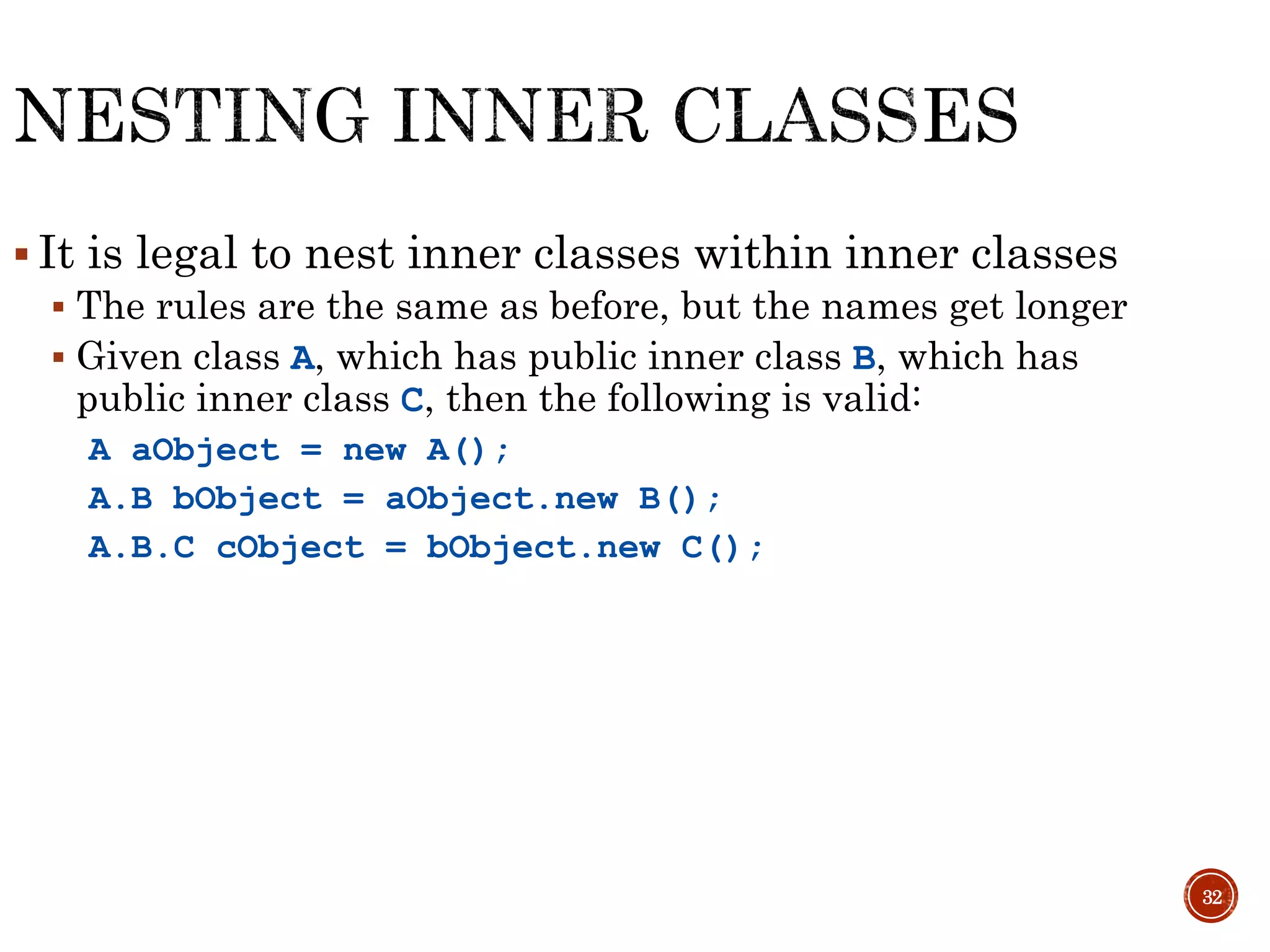
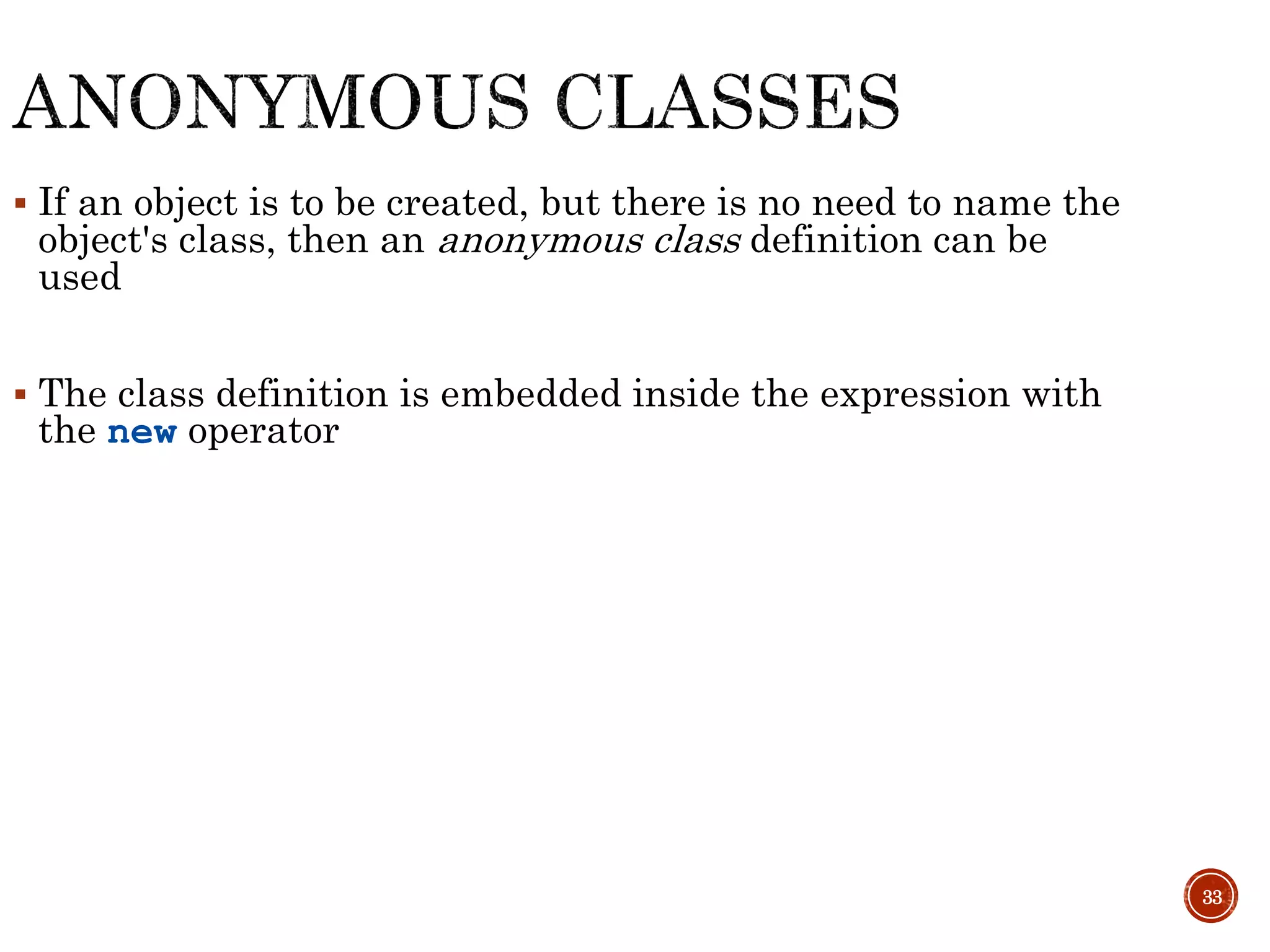
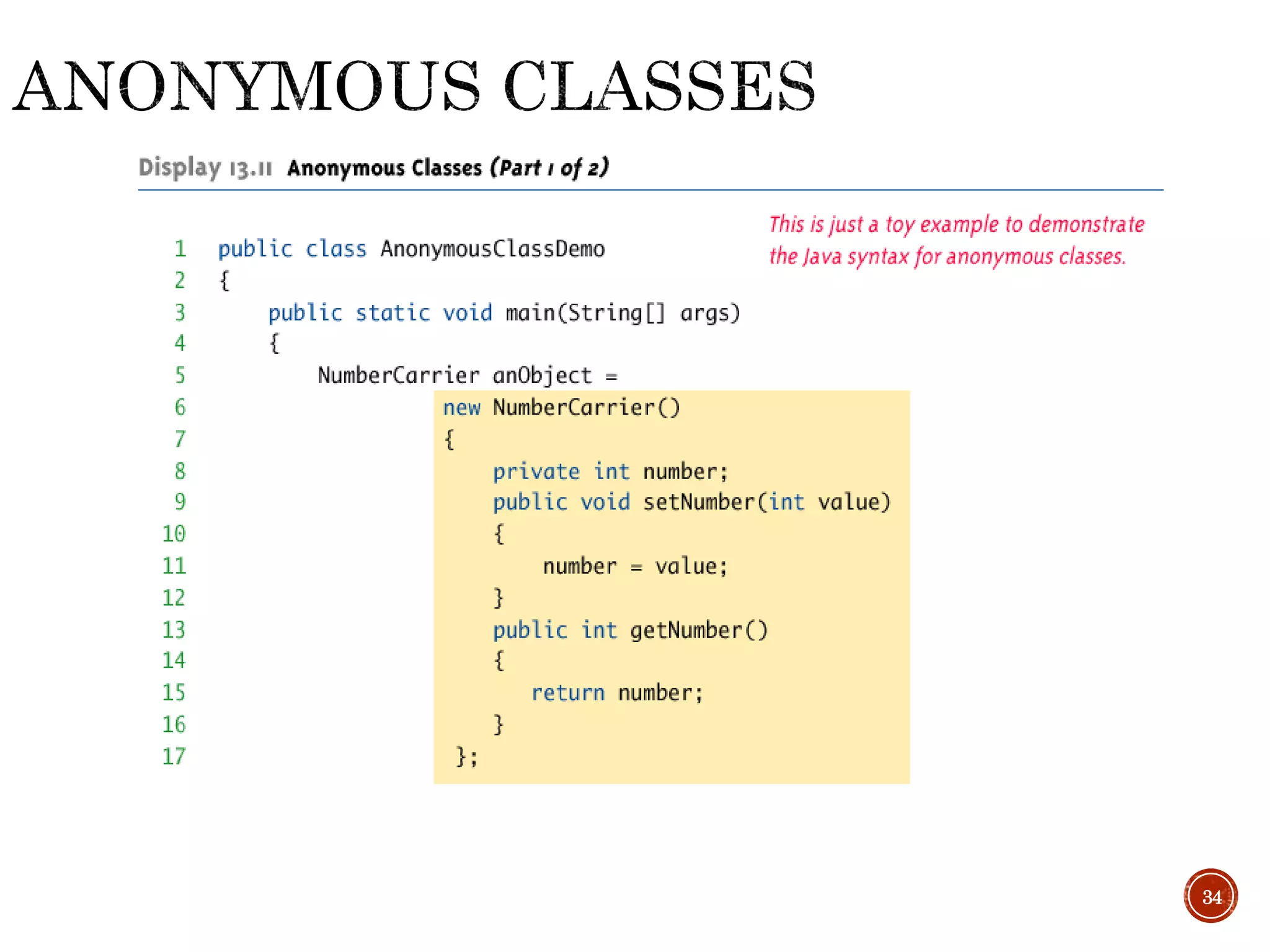

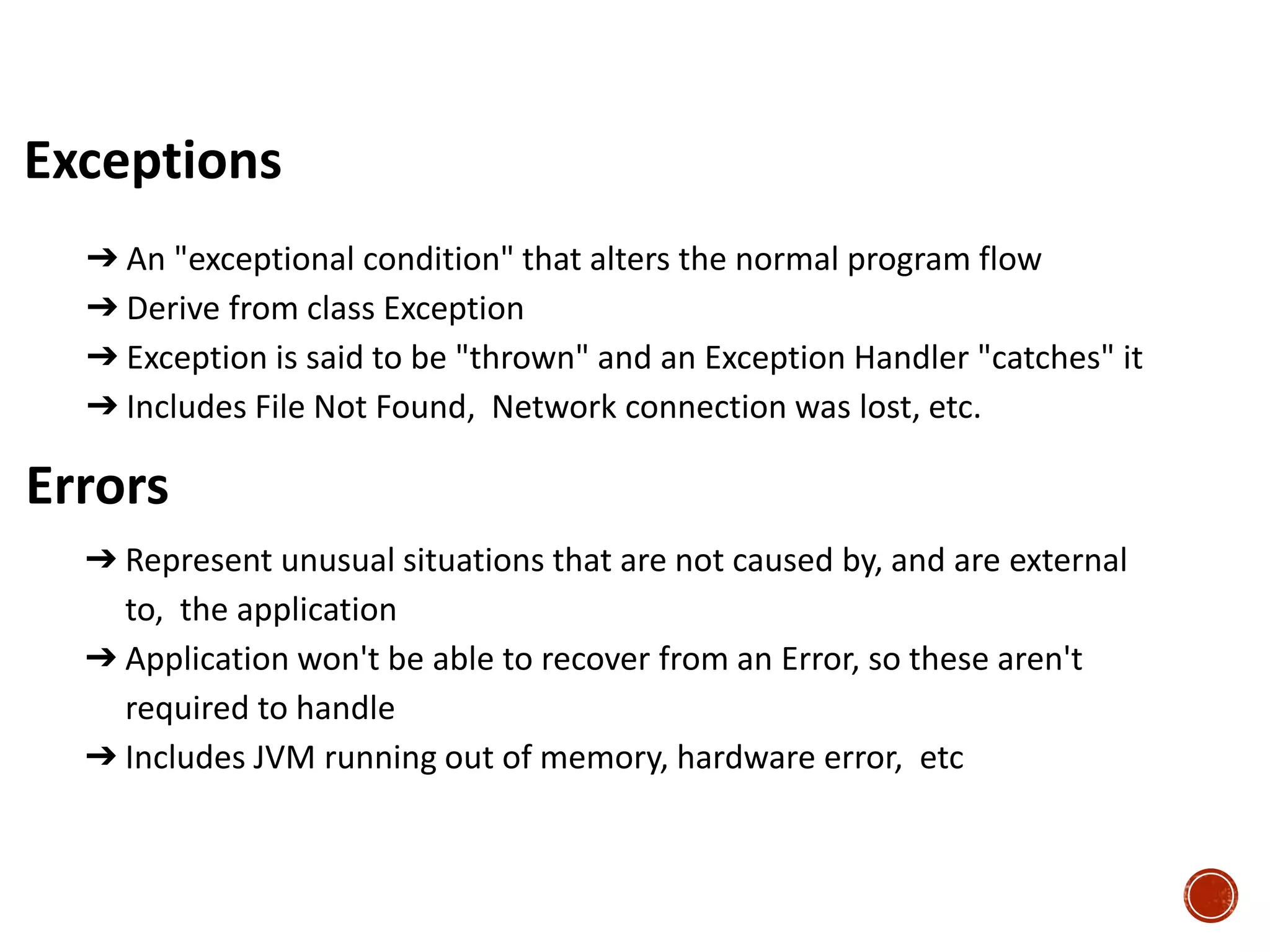
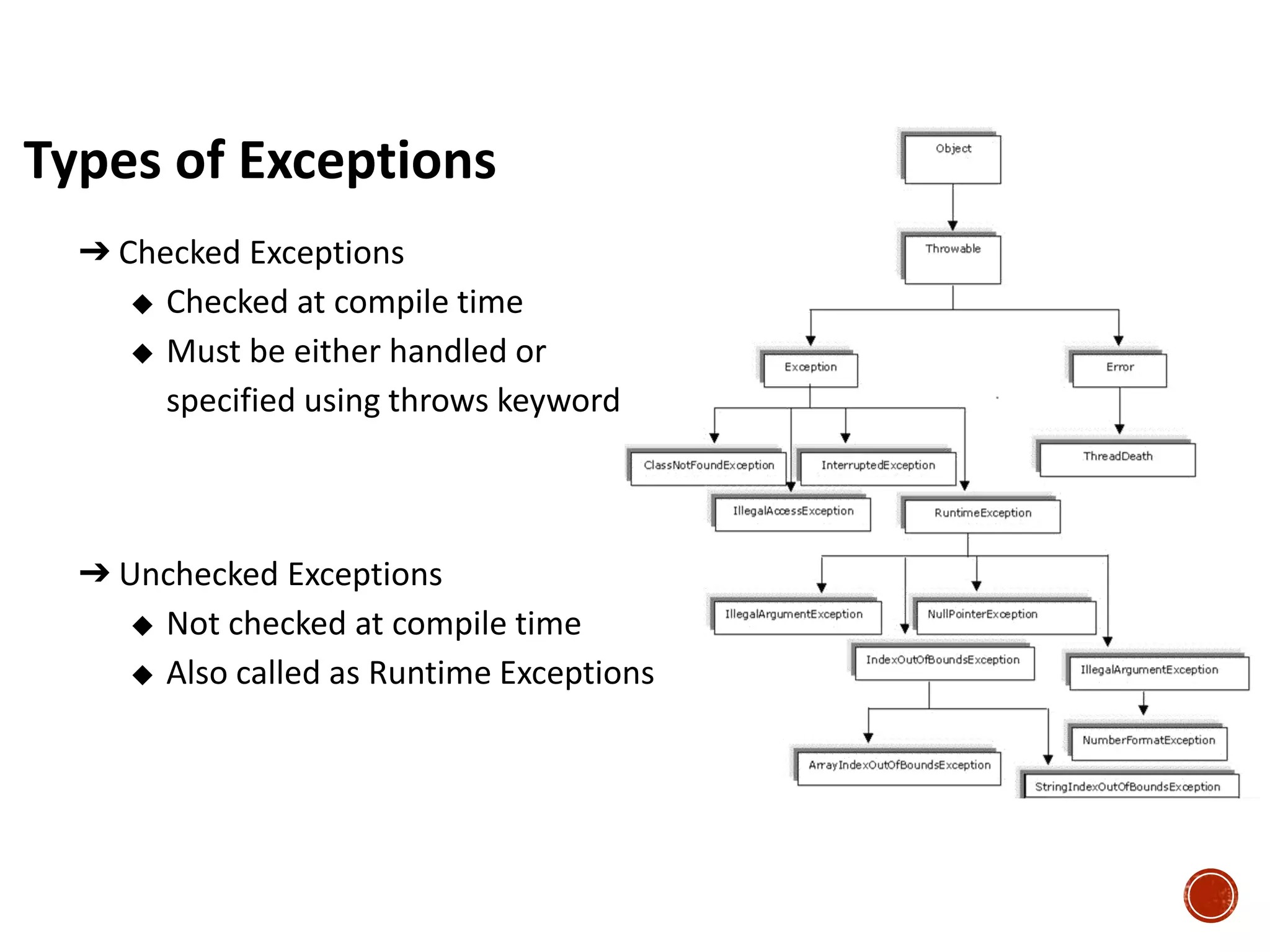
![Checked Exception Example ➔ import java.io.*; class Main { public static void main(String[] args) { FileReader file = new FileReader("a.txt"); BufferedReader fileInput = new BufferedReader(file); } } ➔ Compilation Error: Exception in thread "main" java.lang.RuntimeException: Uncompilable source code - unreported exception java.io.FileNotFoundException; must be caught or declared to be thrown at Main.main(Main.java:5)](https://image.slidesharecdn.com/corejavaoop-170210200049/75/Core-java-oop-38-2048.jpg)
![Runtime Exception Example ➔ class Main { public static void main(String args[]) { int x = 0; int y = 10; int z = y/x; } } ➔ Exception in thread "main" java.lang.ArithmeticException: / by zero at Main.main(Main.java:5) Java Result: 1](https://image.slidesharecdn.com/corejavaoop-170210200049/75/Core-java-oop-39-2048.jpg)
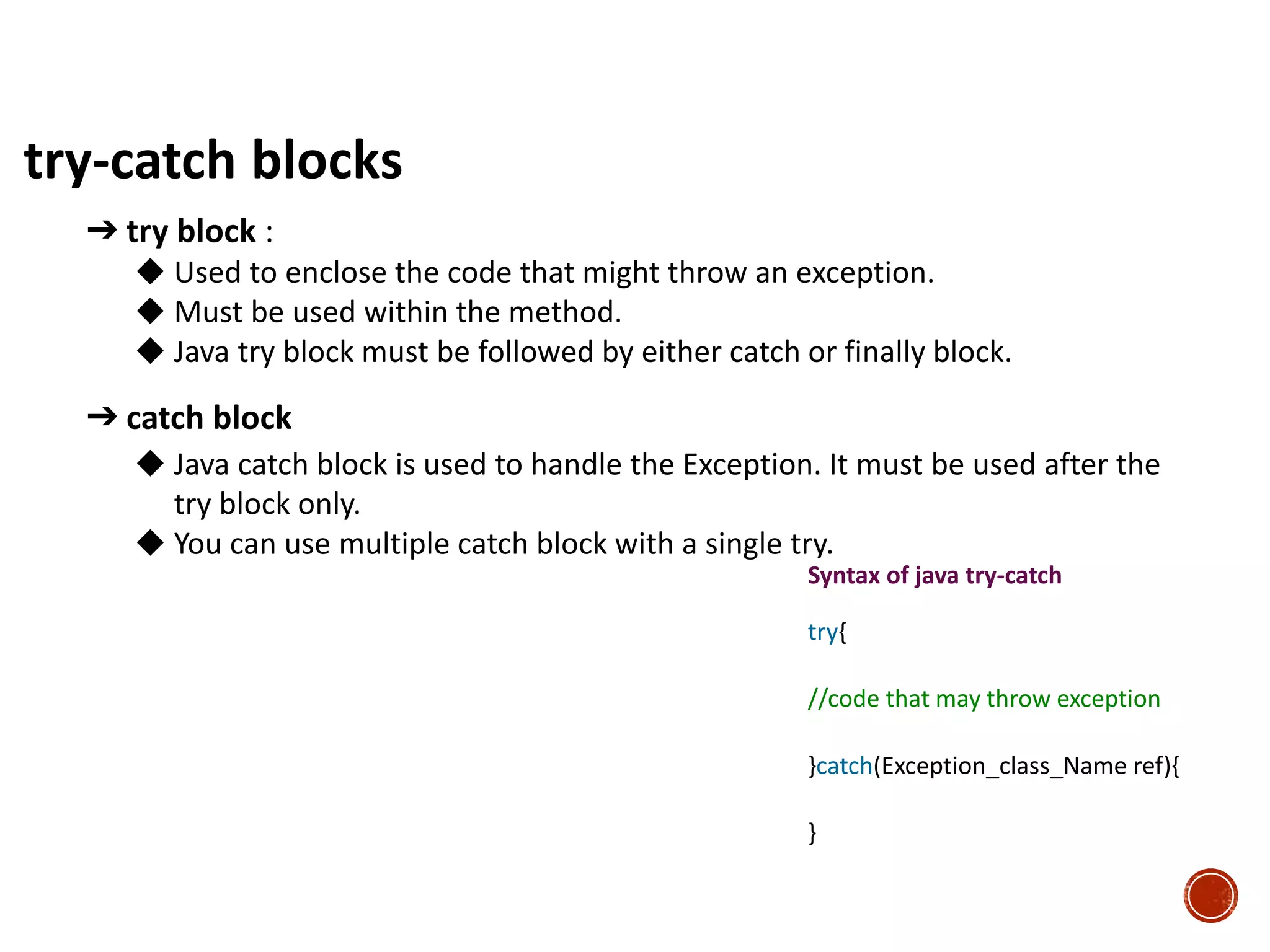
![Example public class Testtrycatch{ public static void main(String args[]){ try{ int data=50/0; }catch(ArithmeticException e){ System.out.println(e); } System.out.println("Executing rest of the code..."); } } Output : Exception in thread main java.lang.ArithmeticException:/ by zero Executing rest of the code...](https://image.slidesharecdn.com/corejavaoop-170210200049/75/Core-java-oop-41-2048.jpg)
